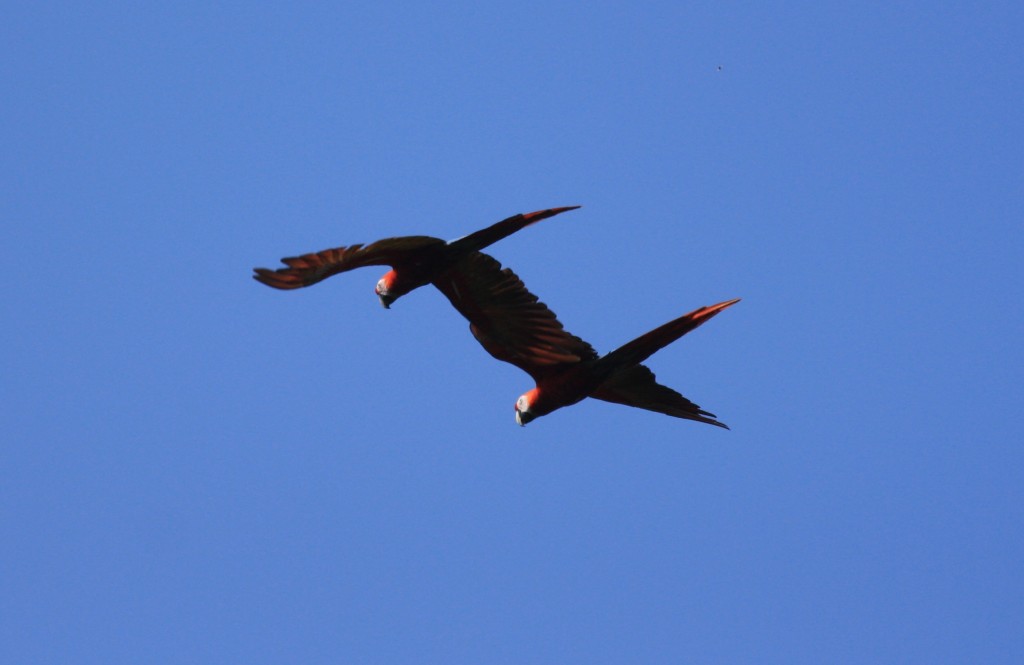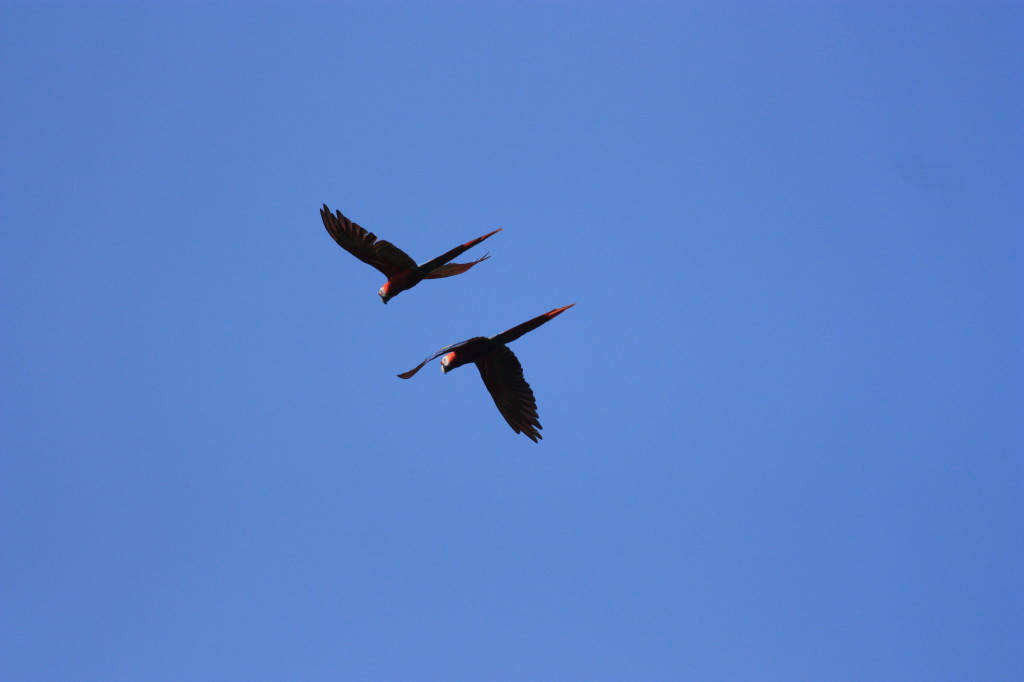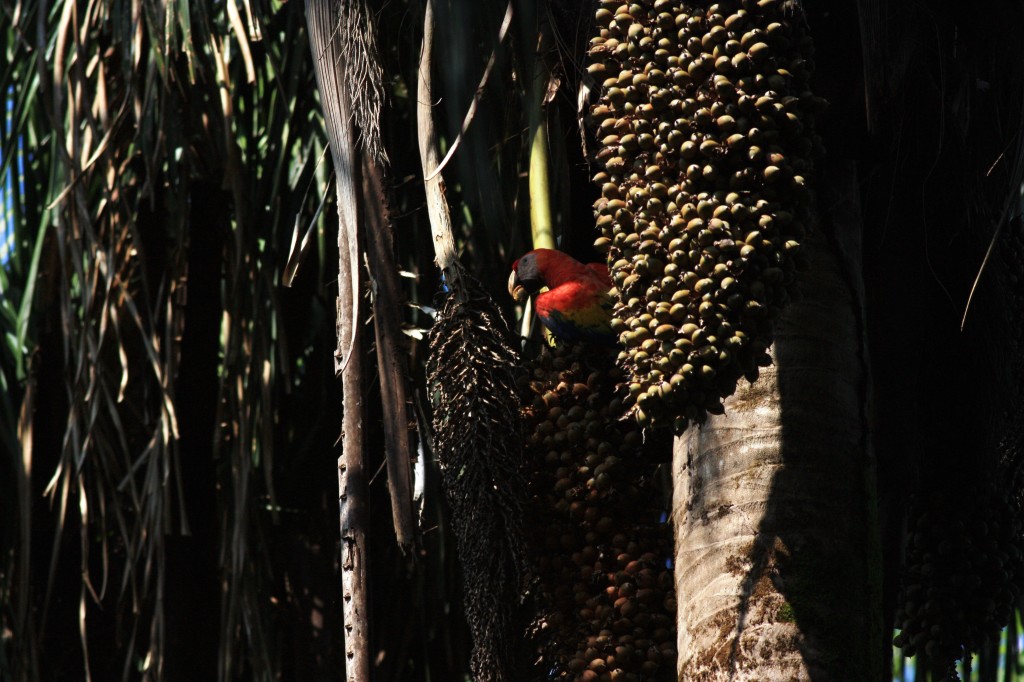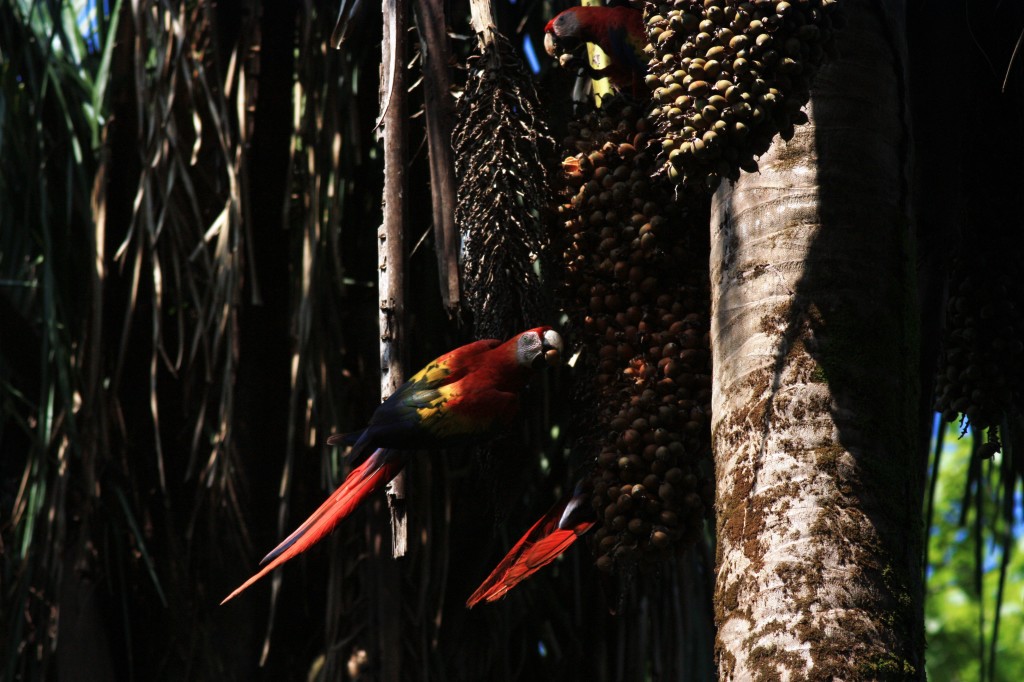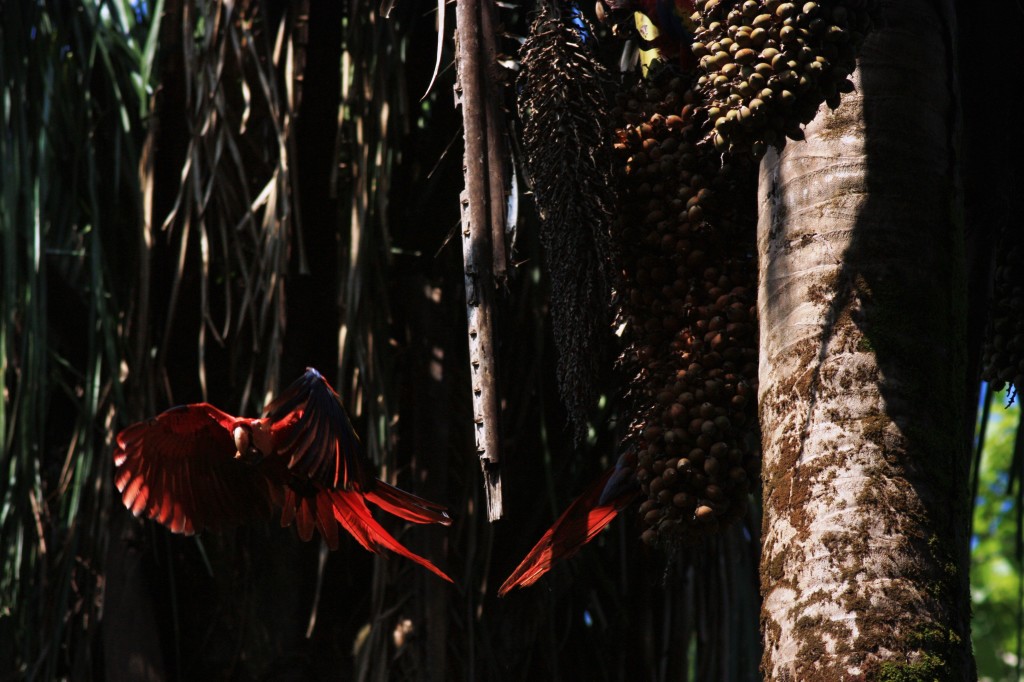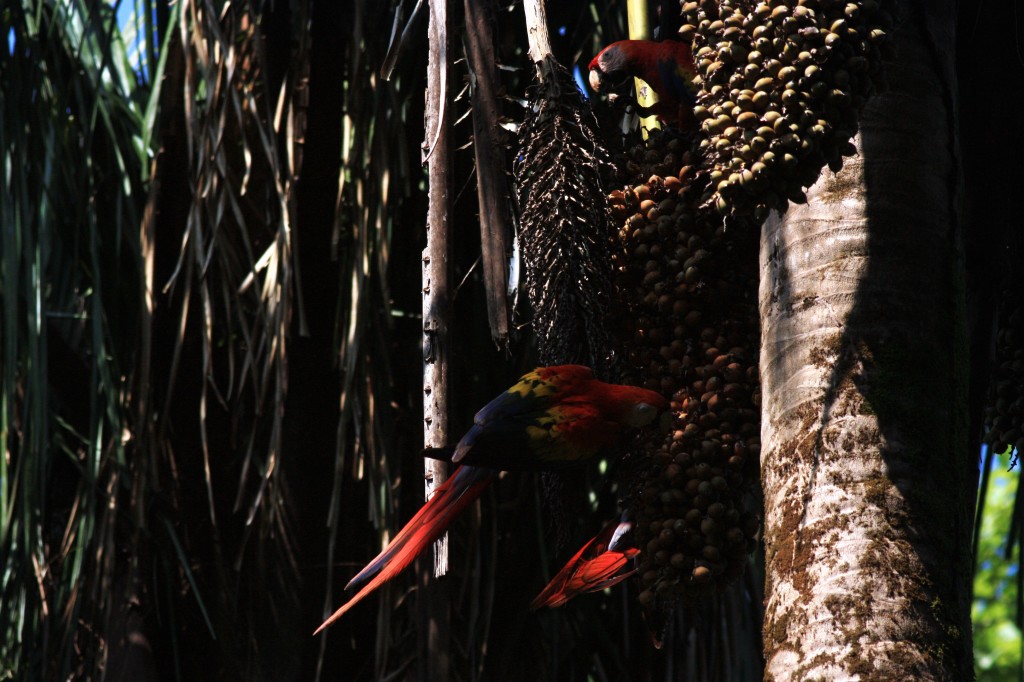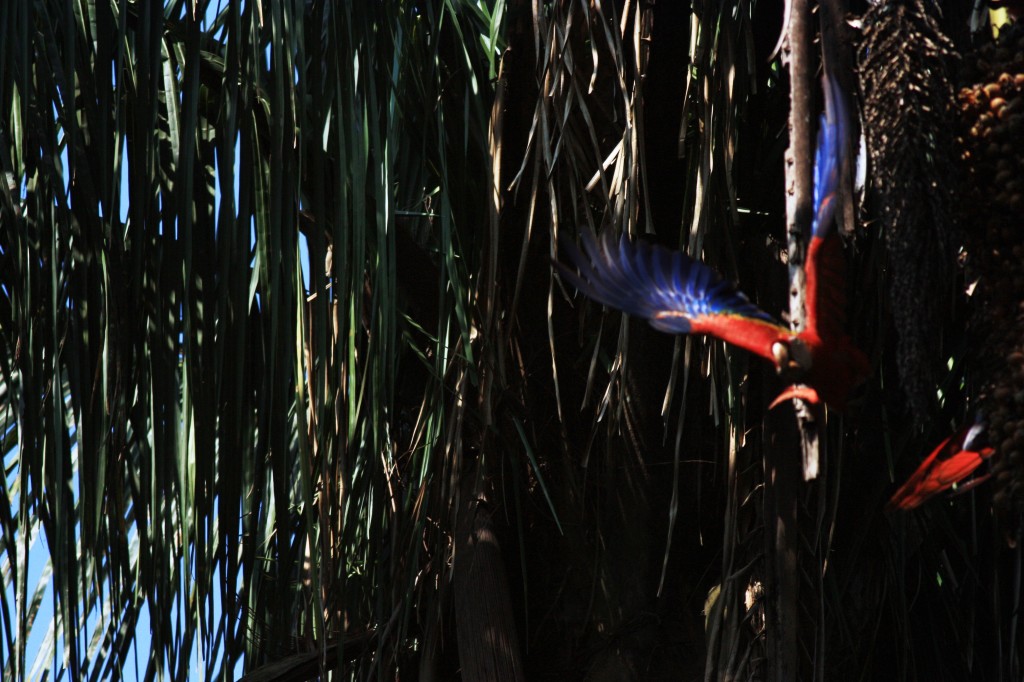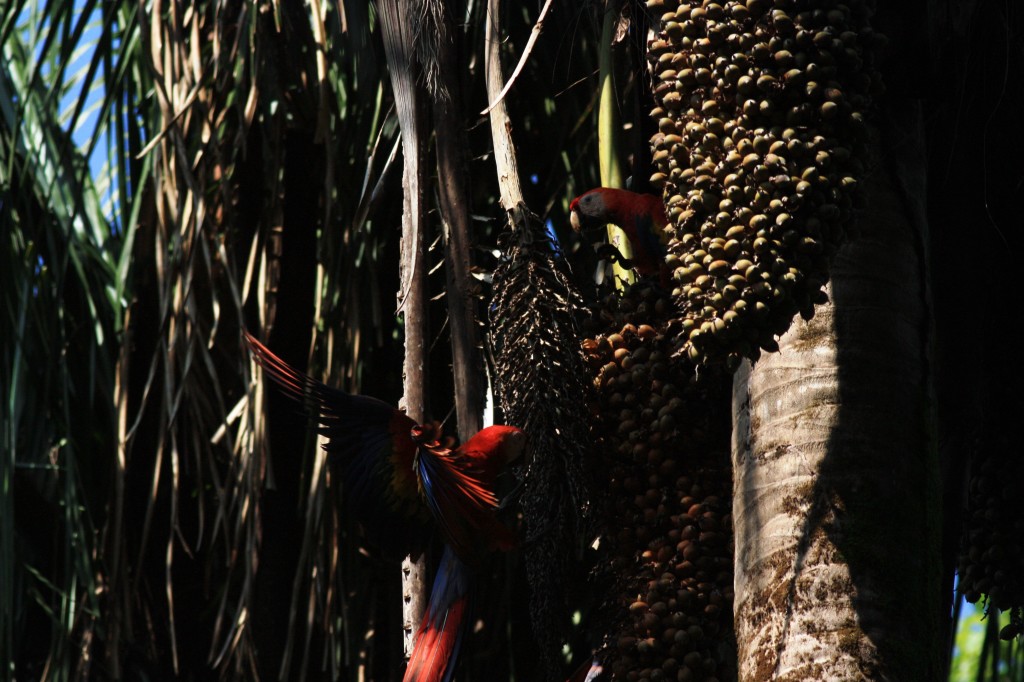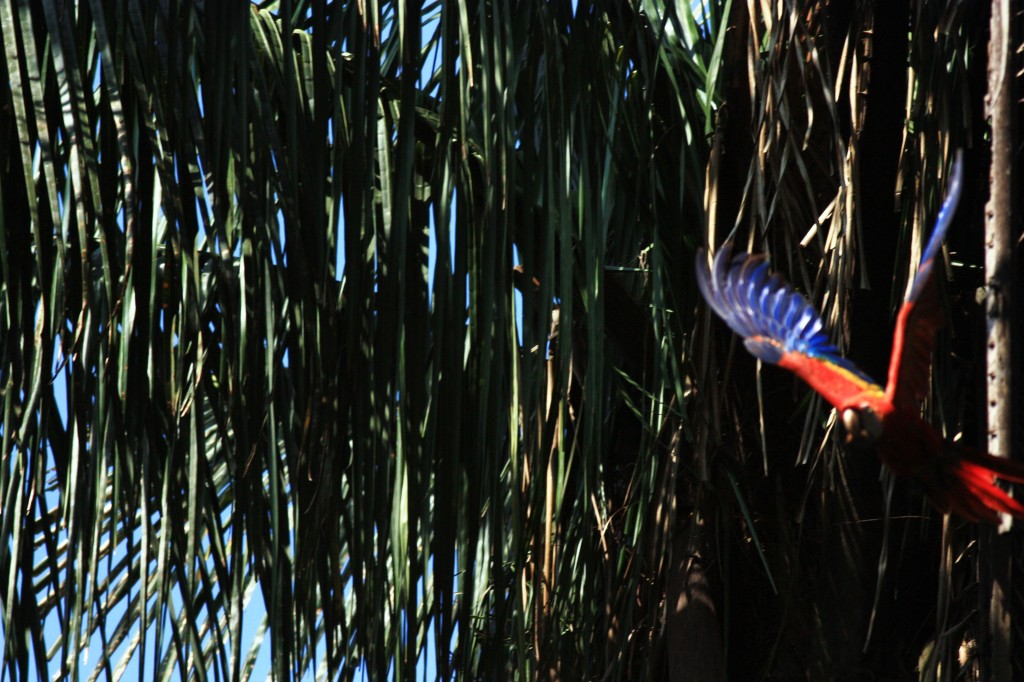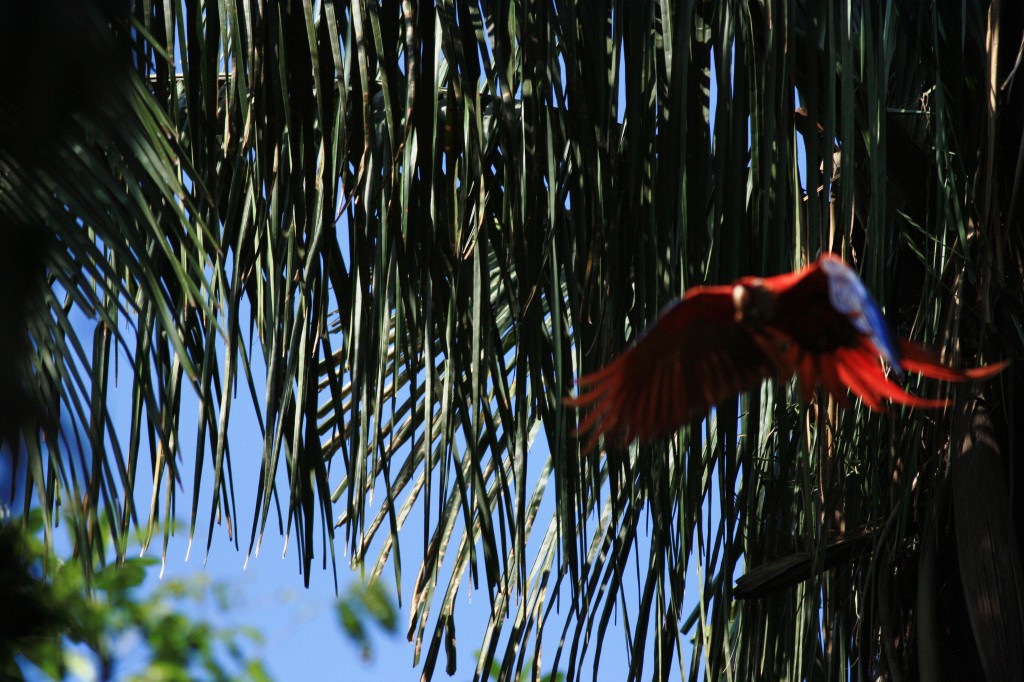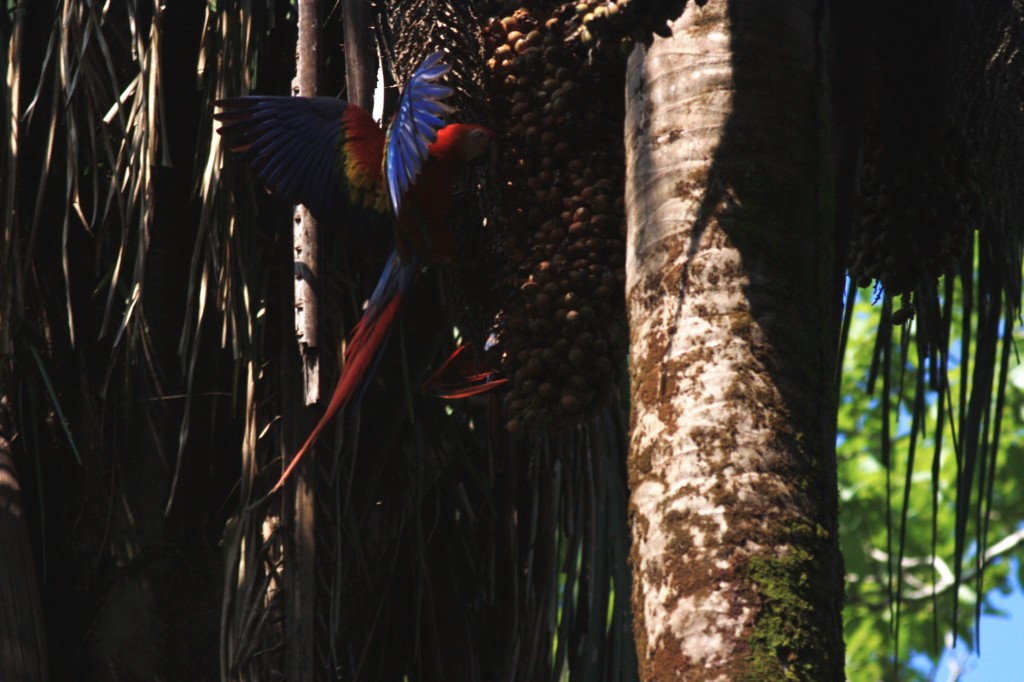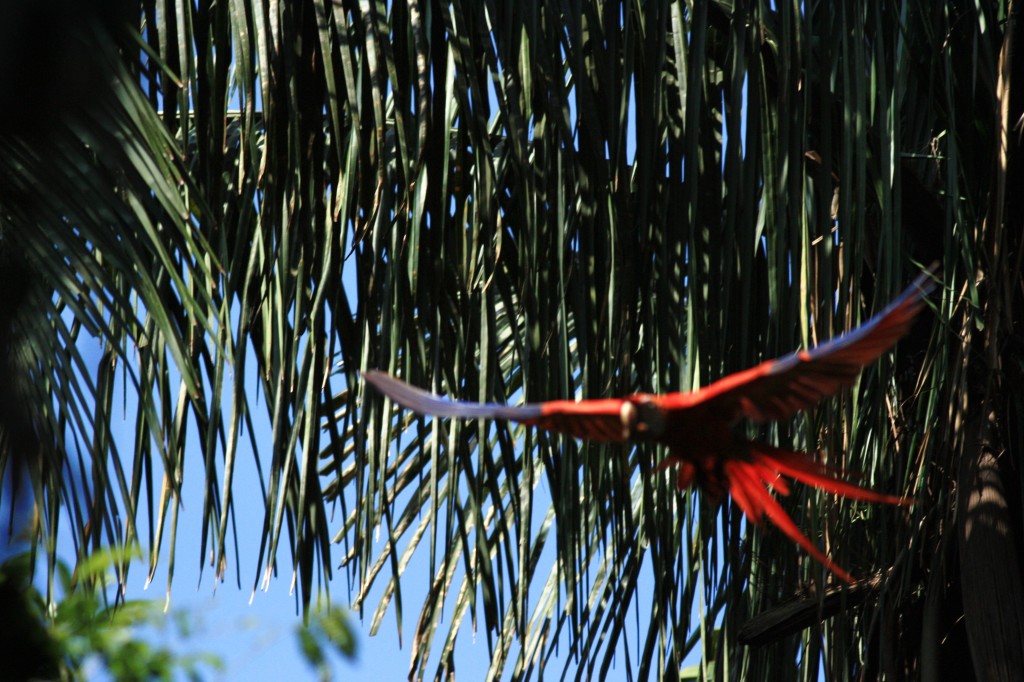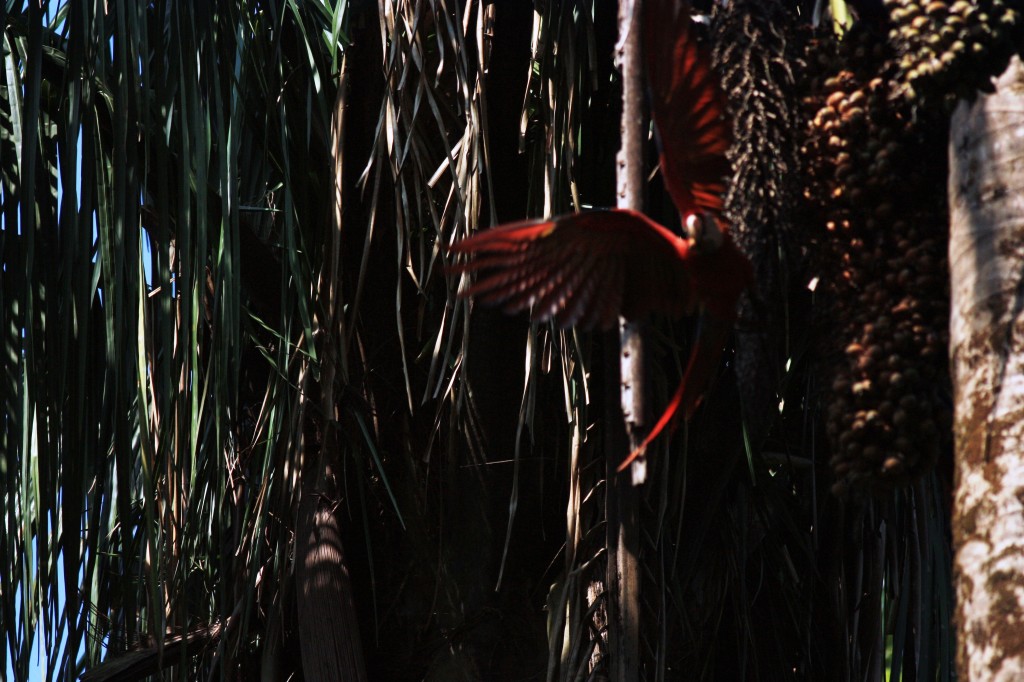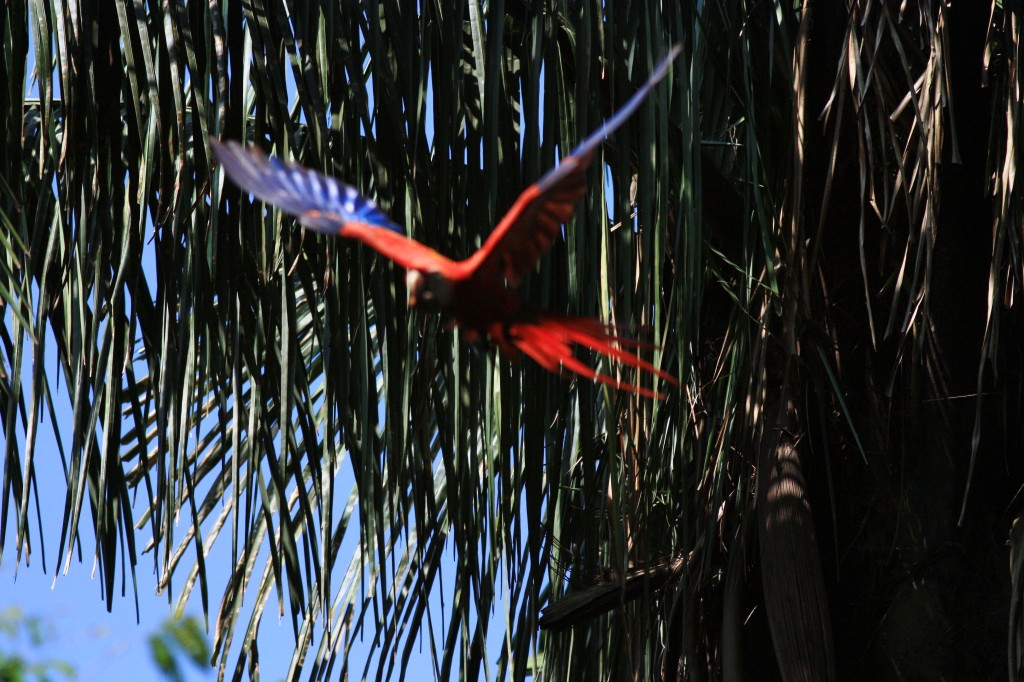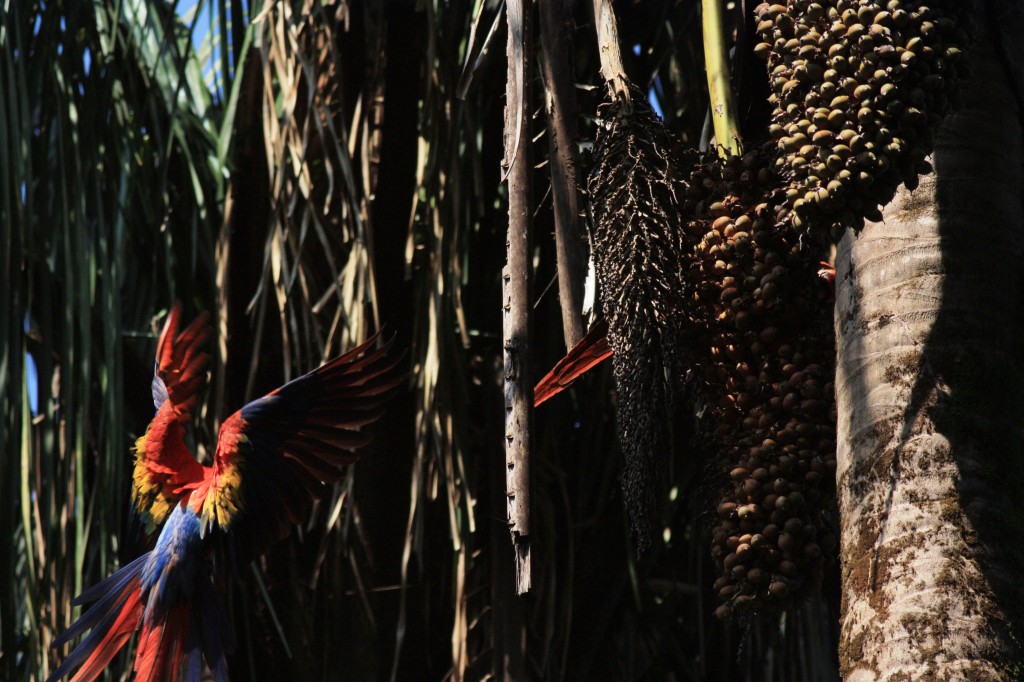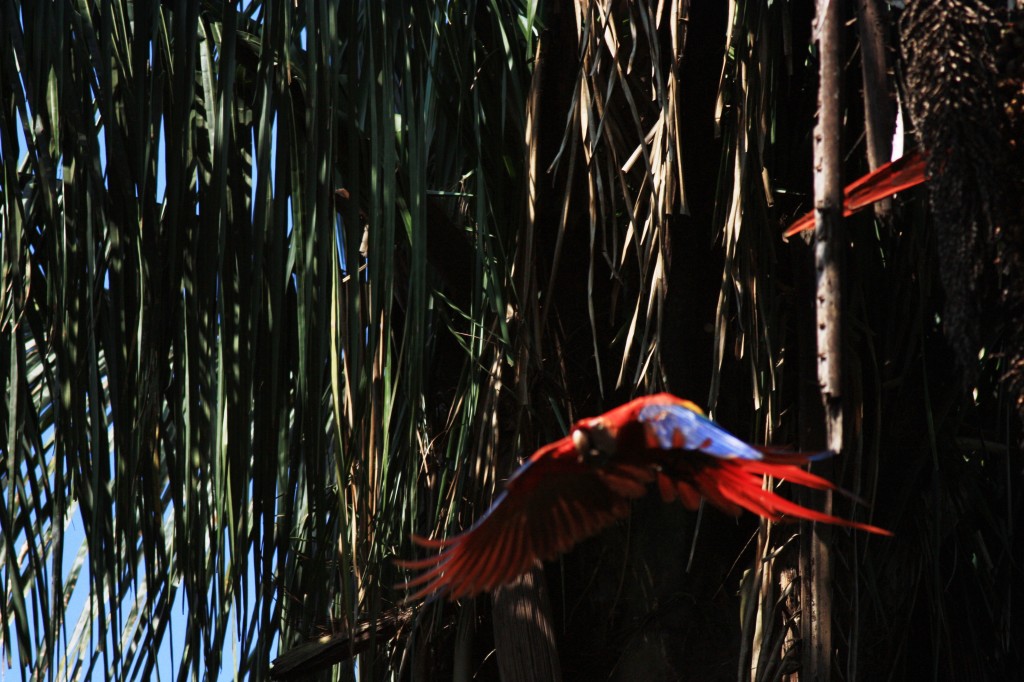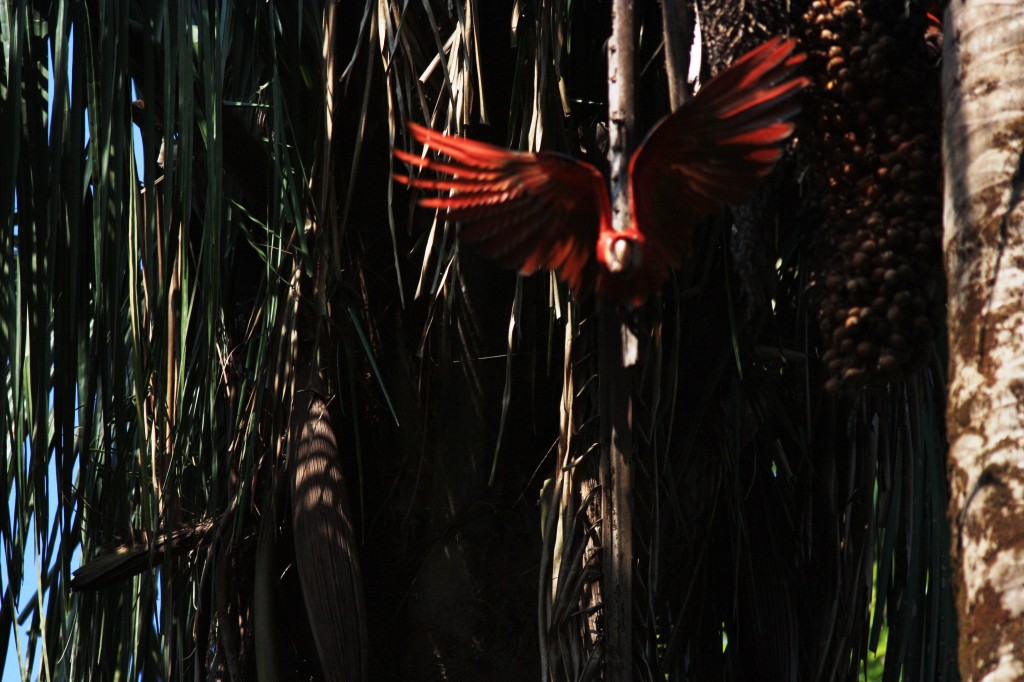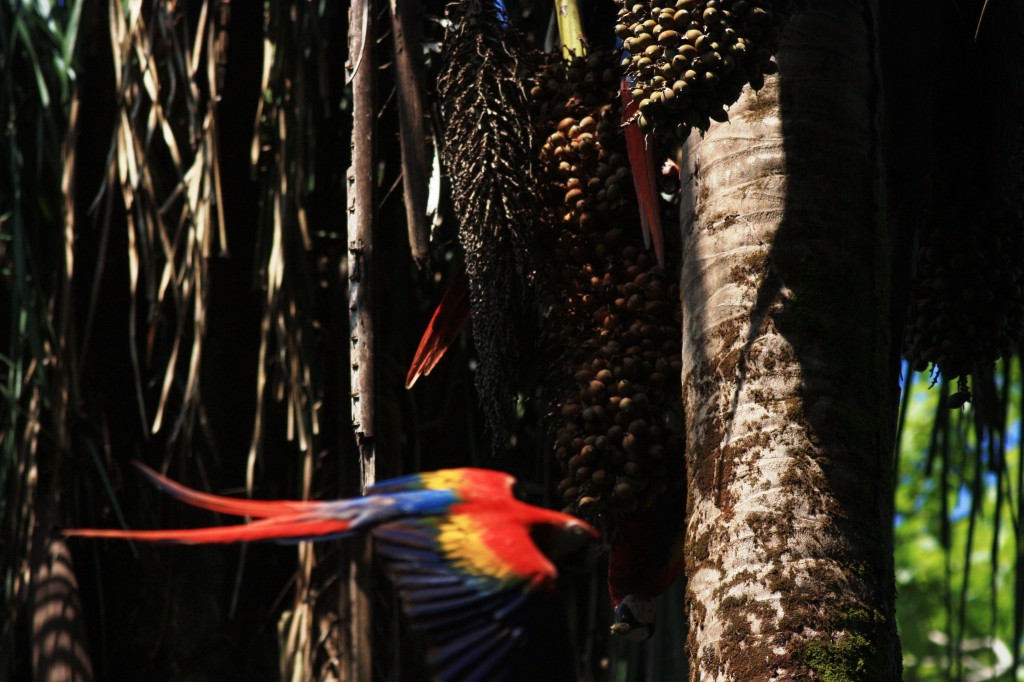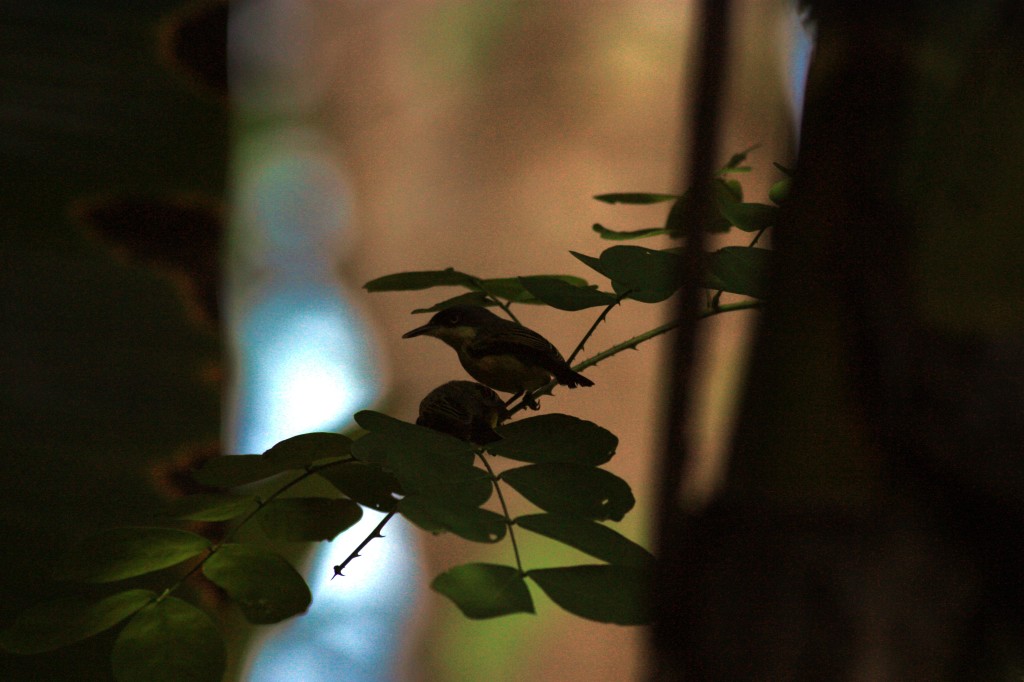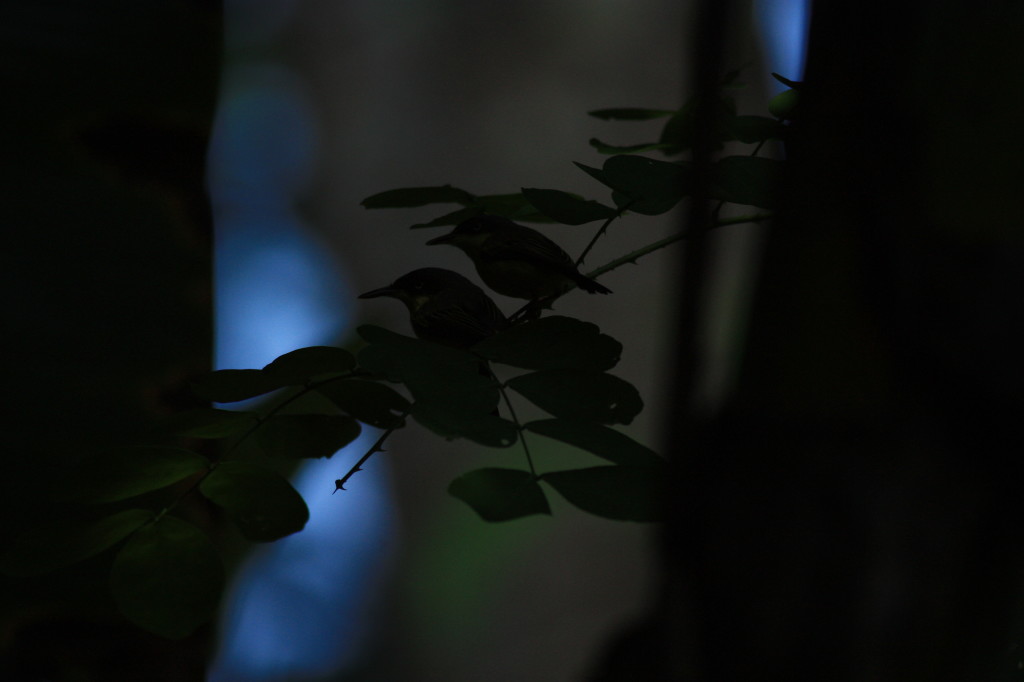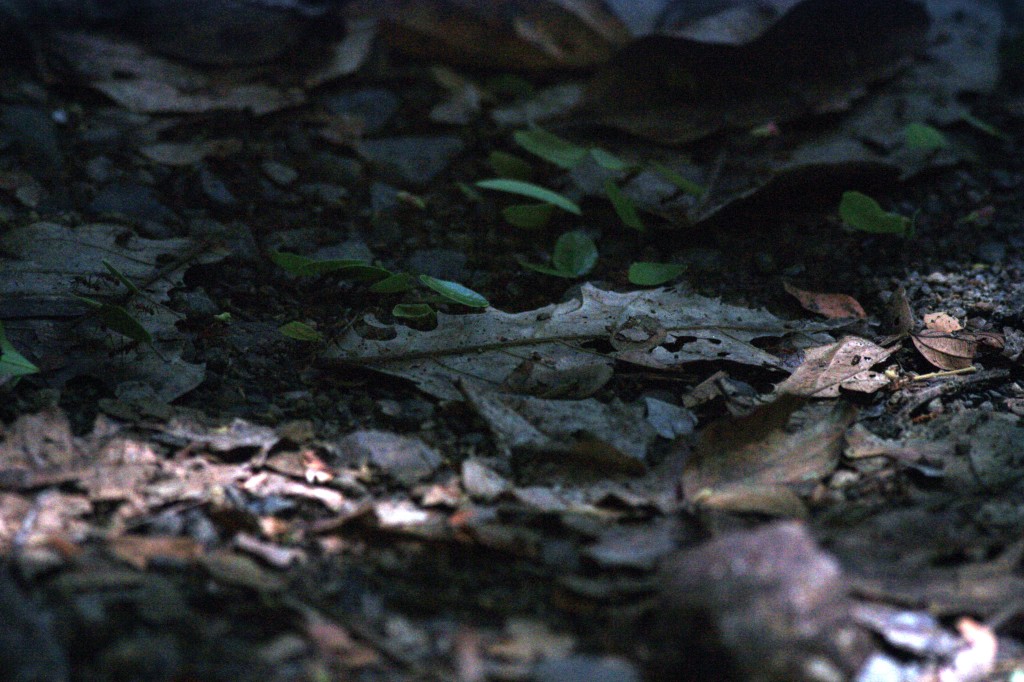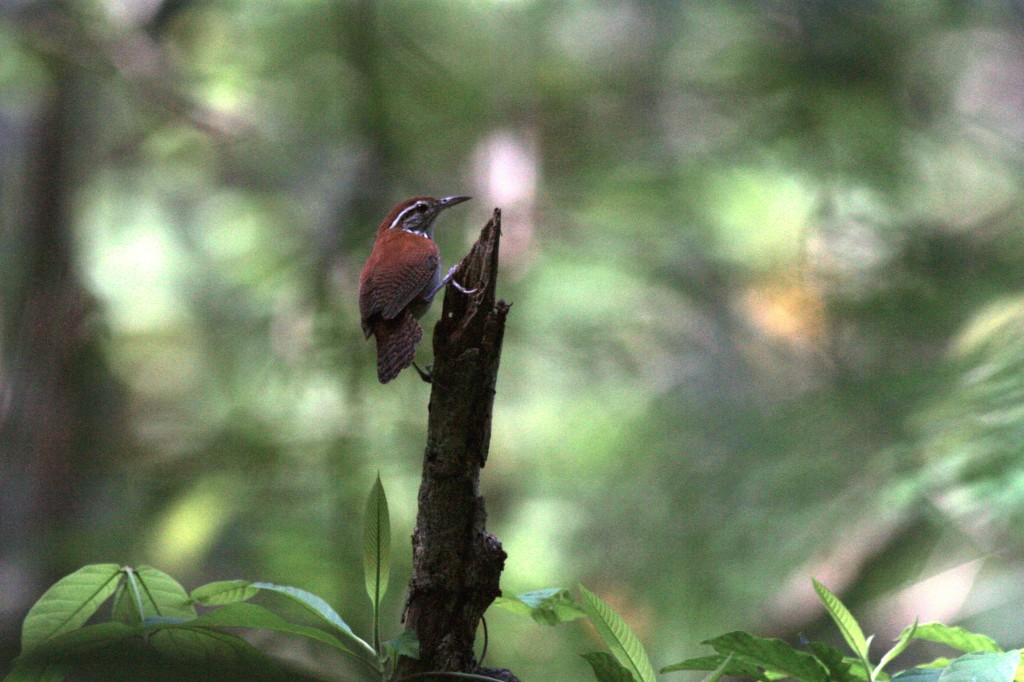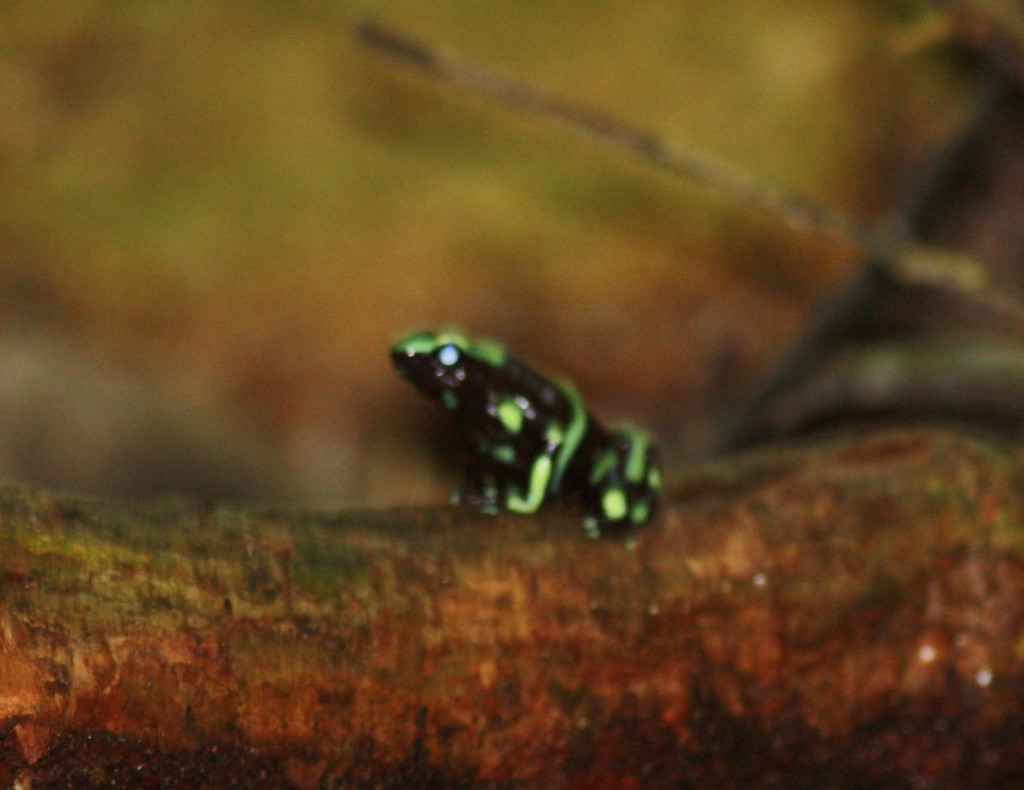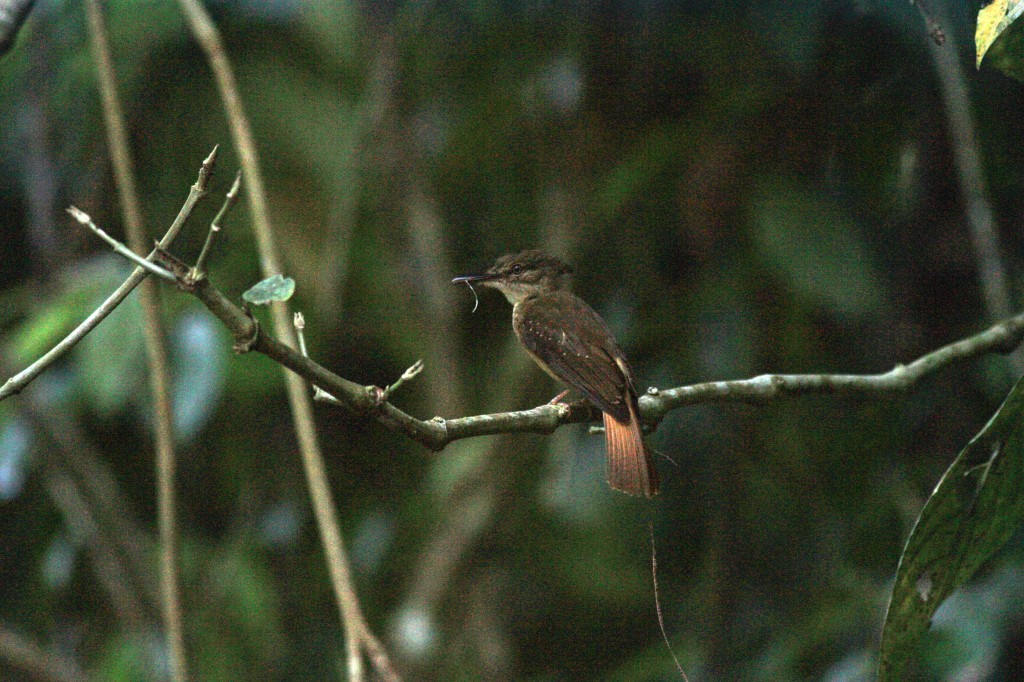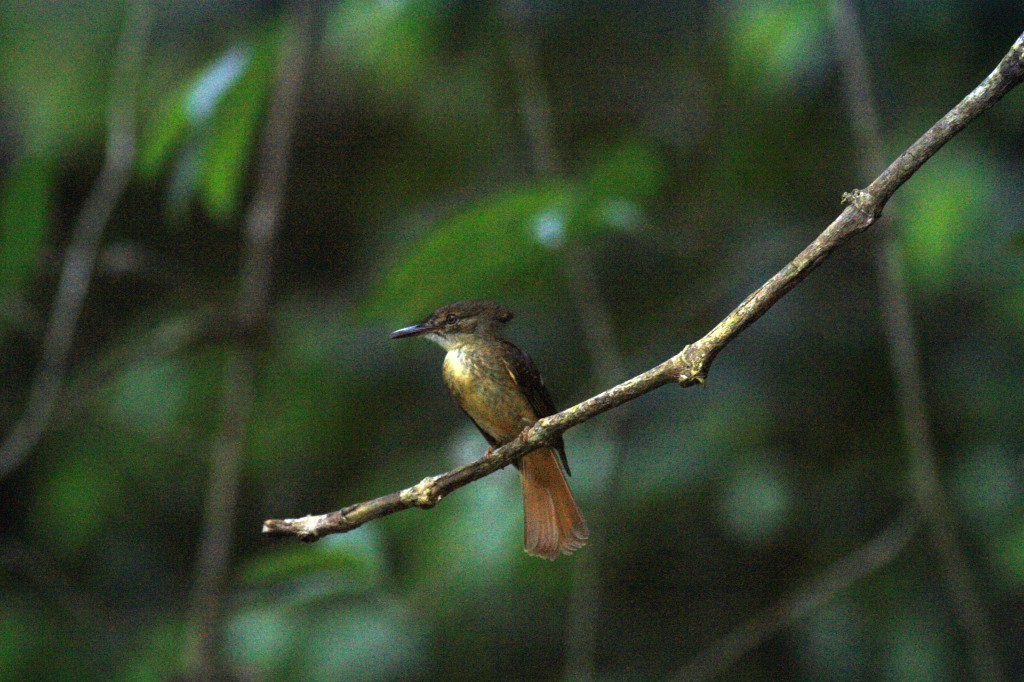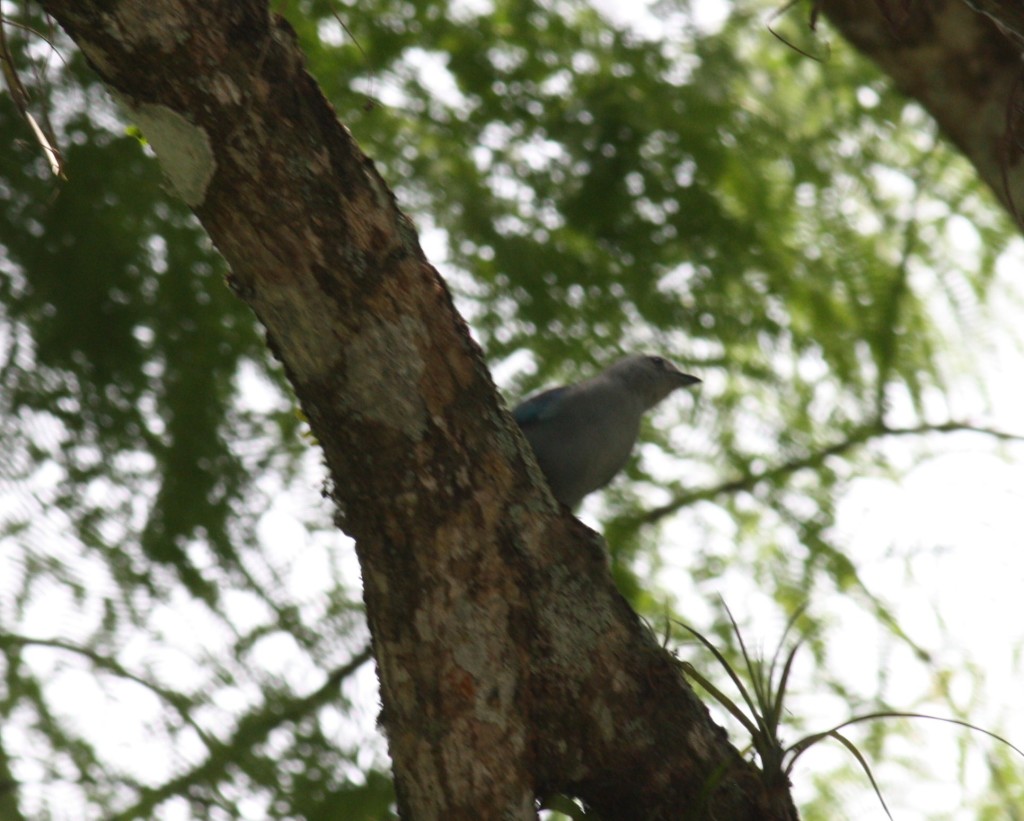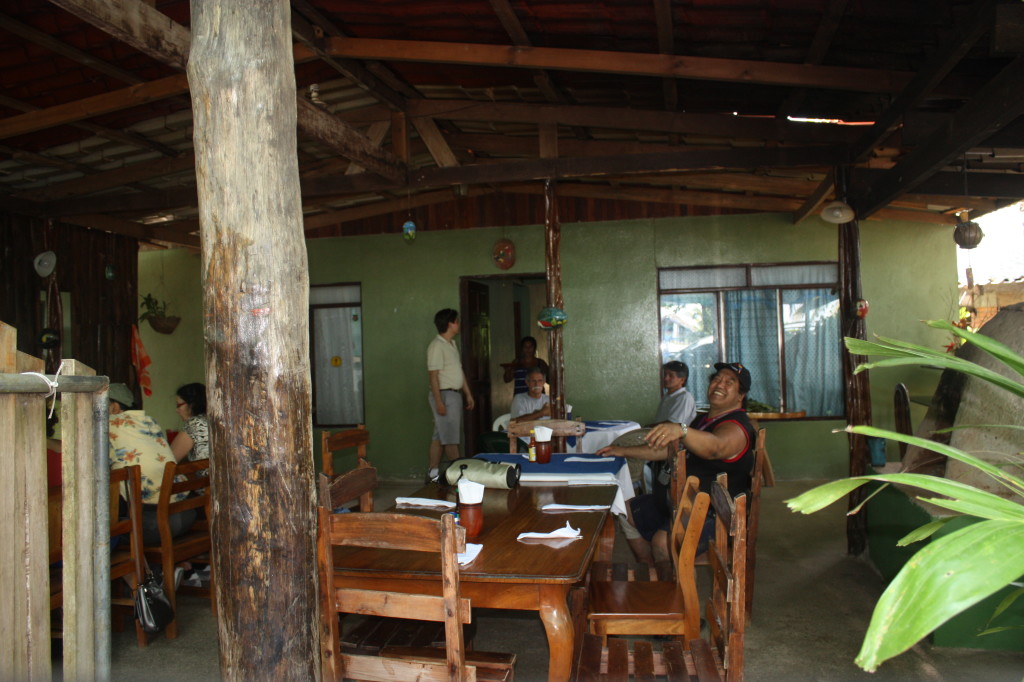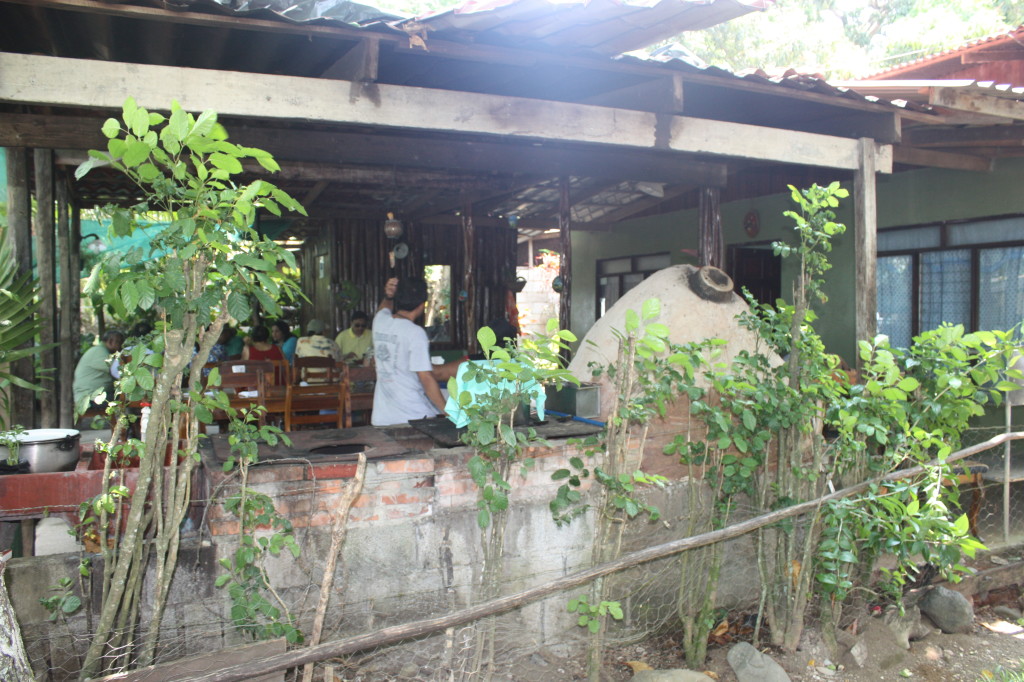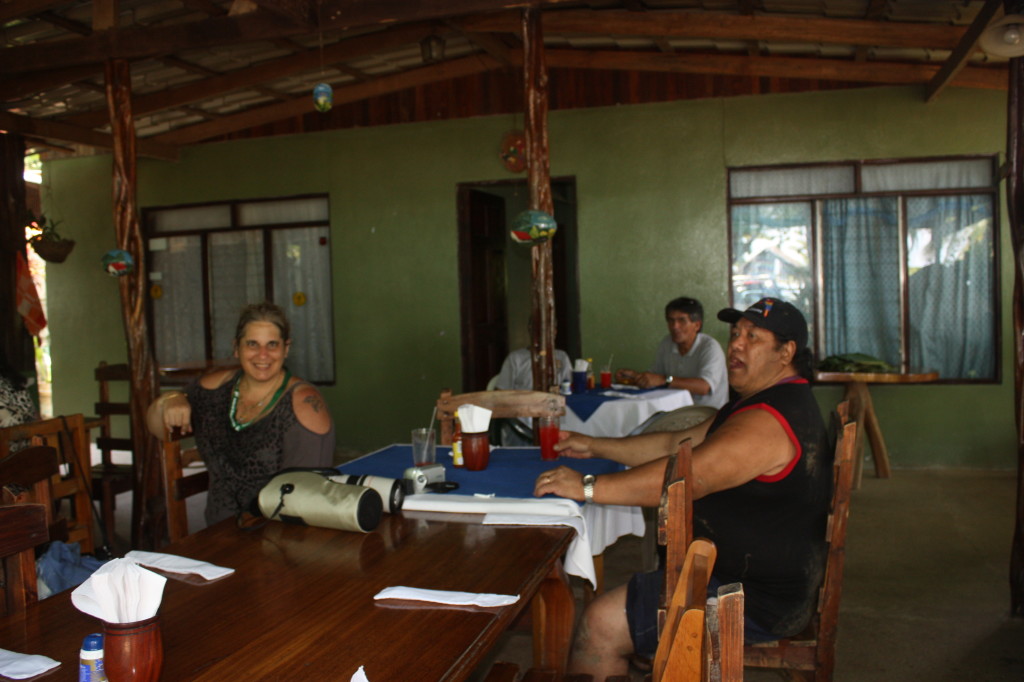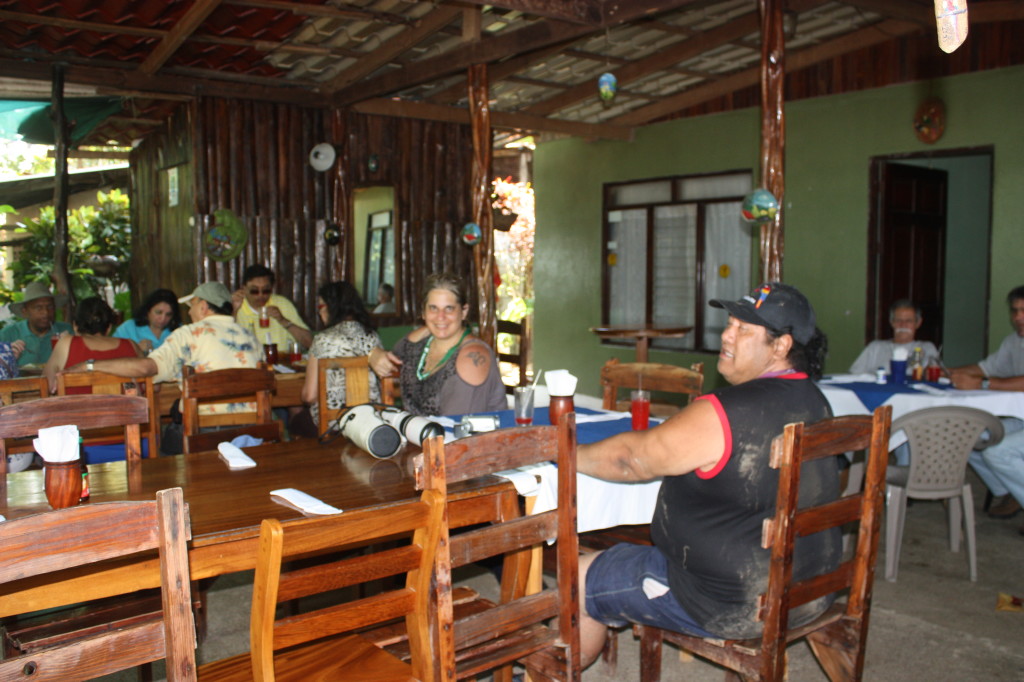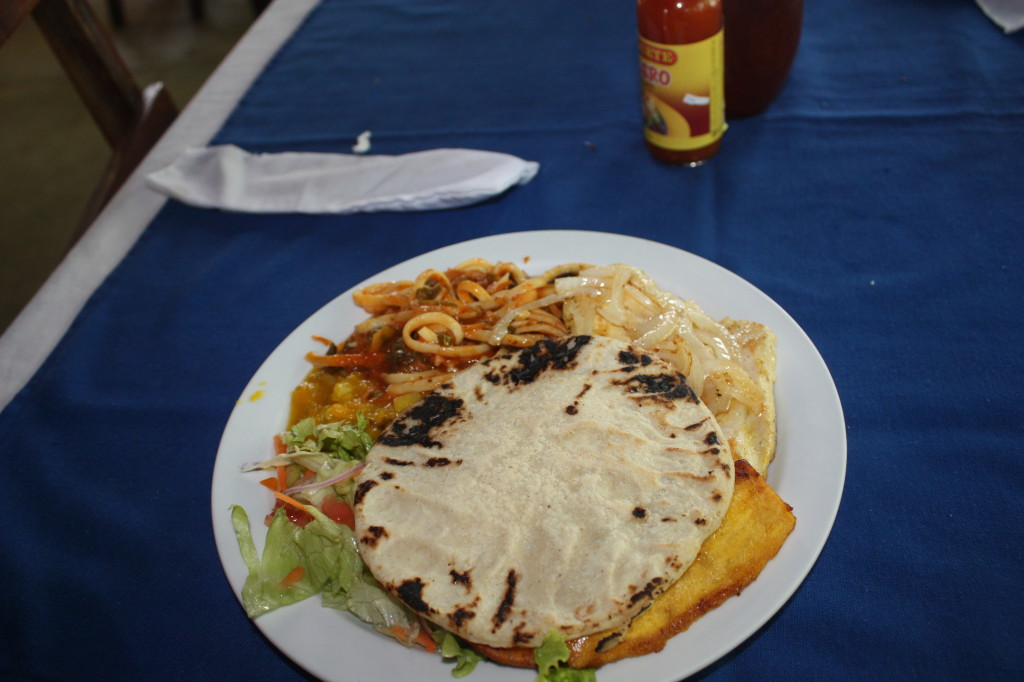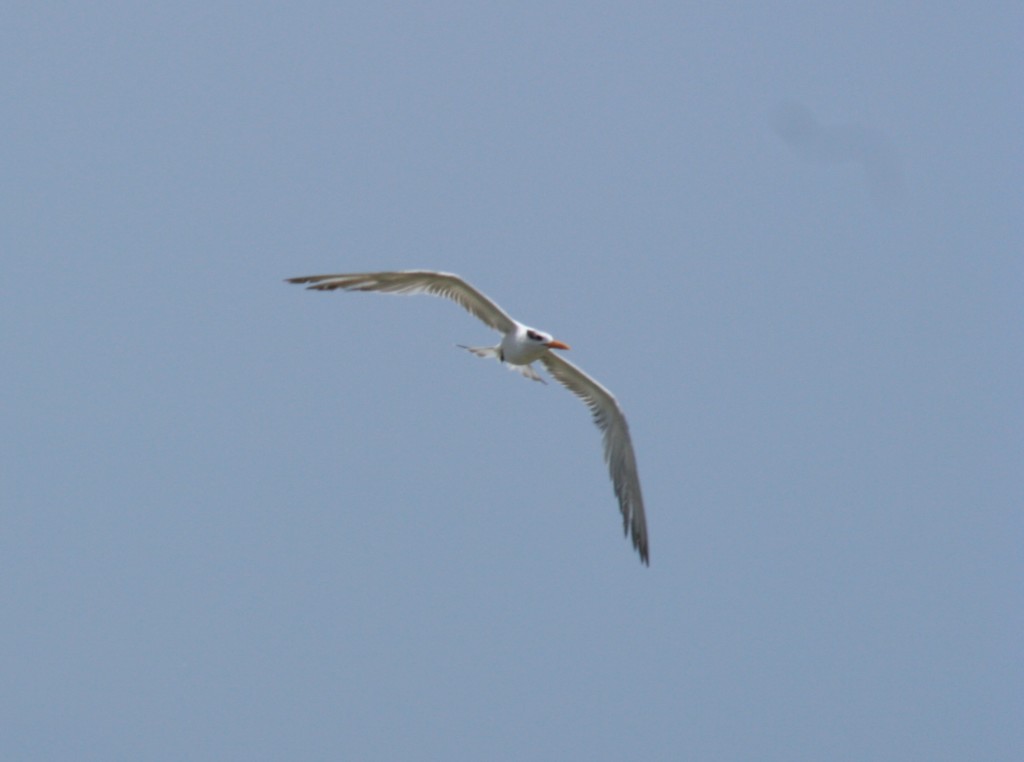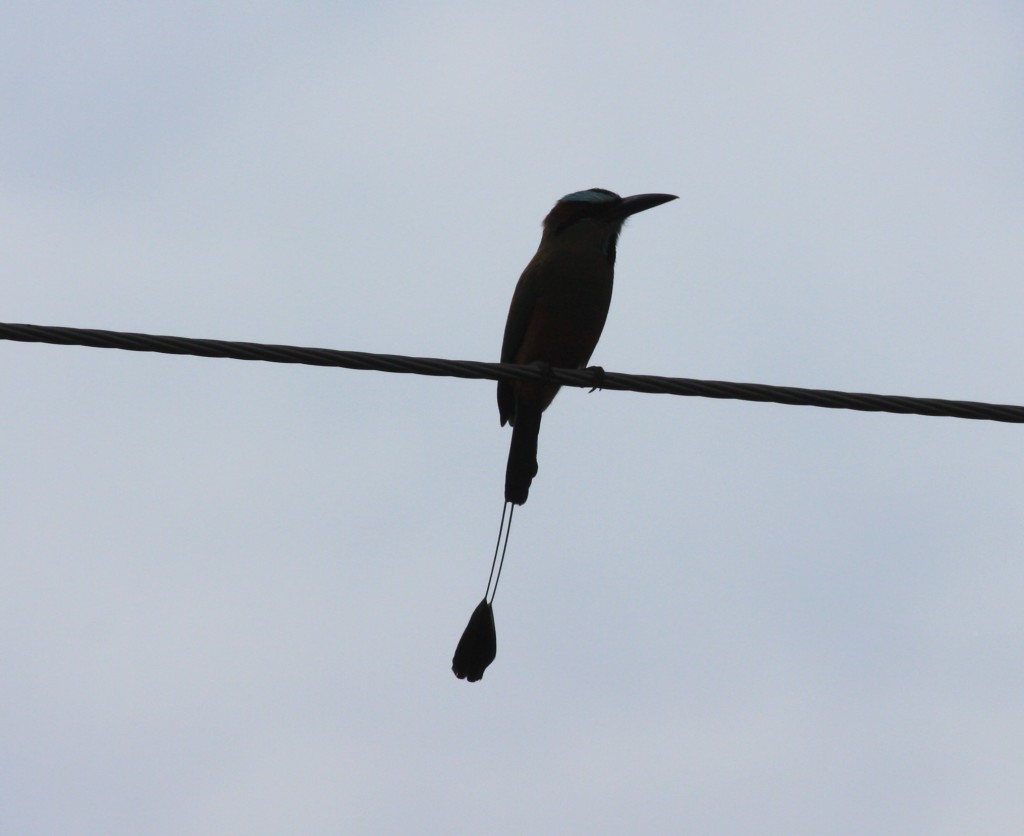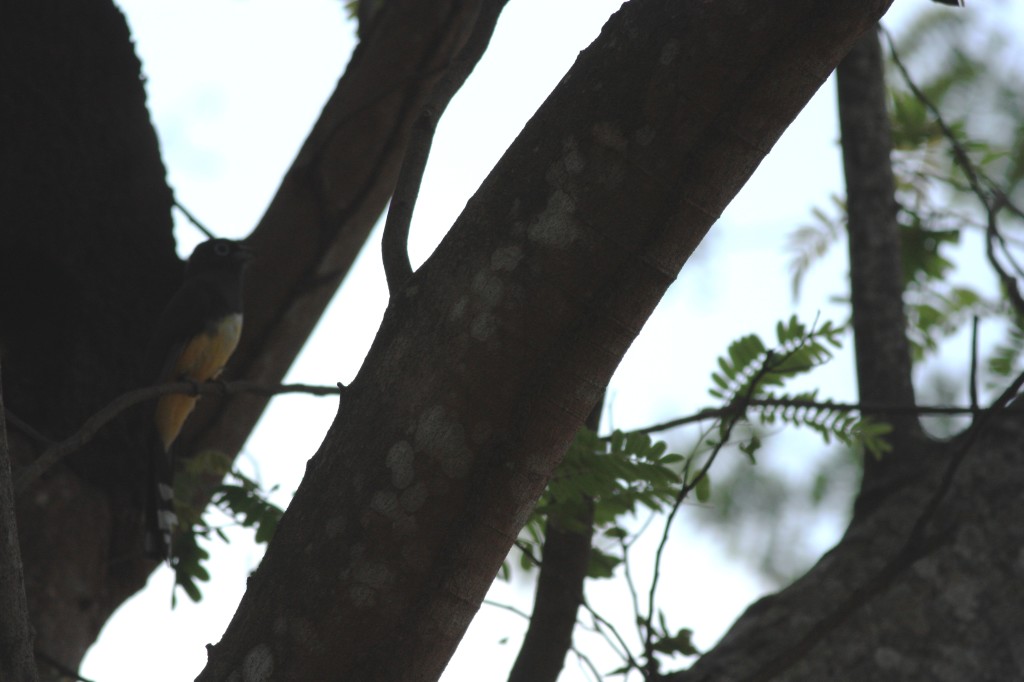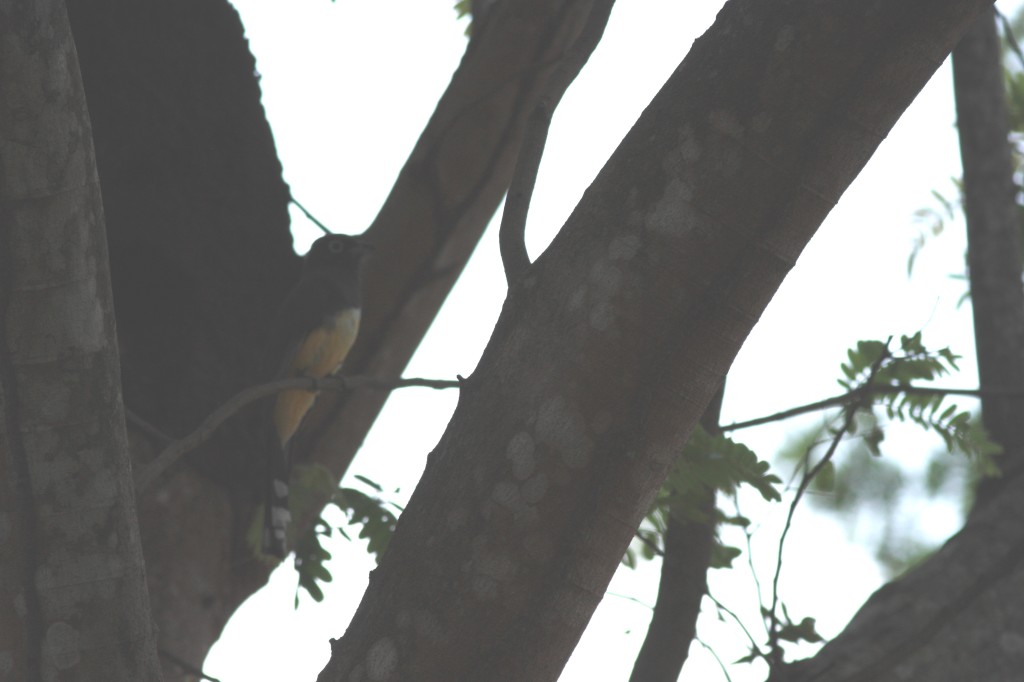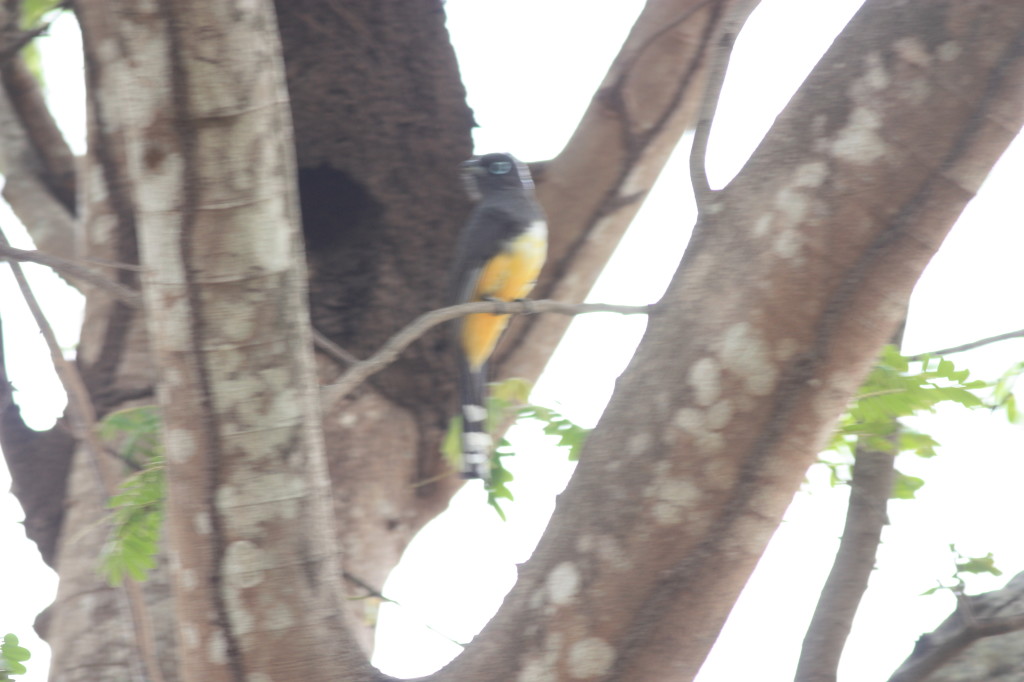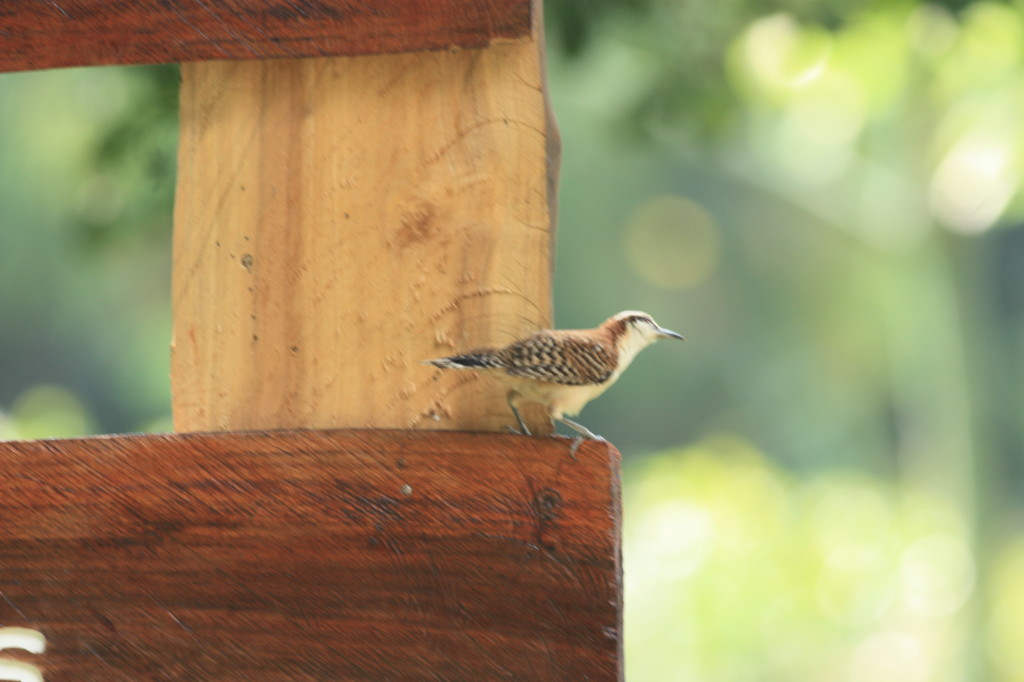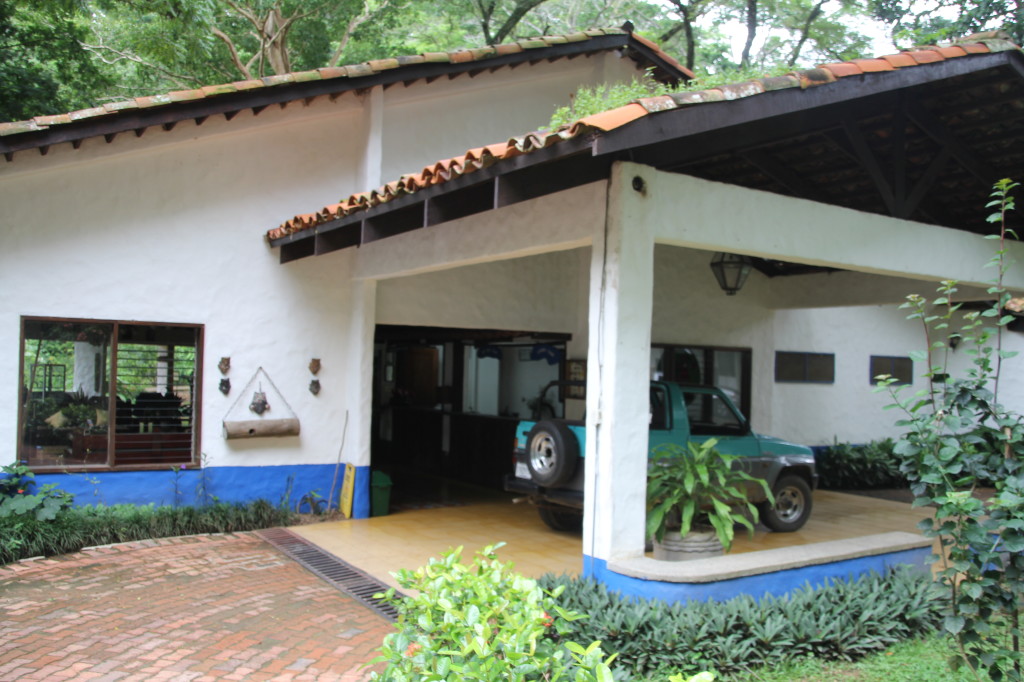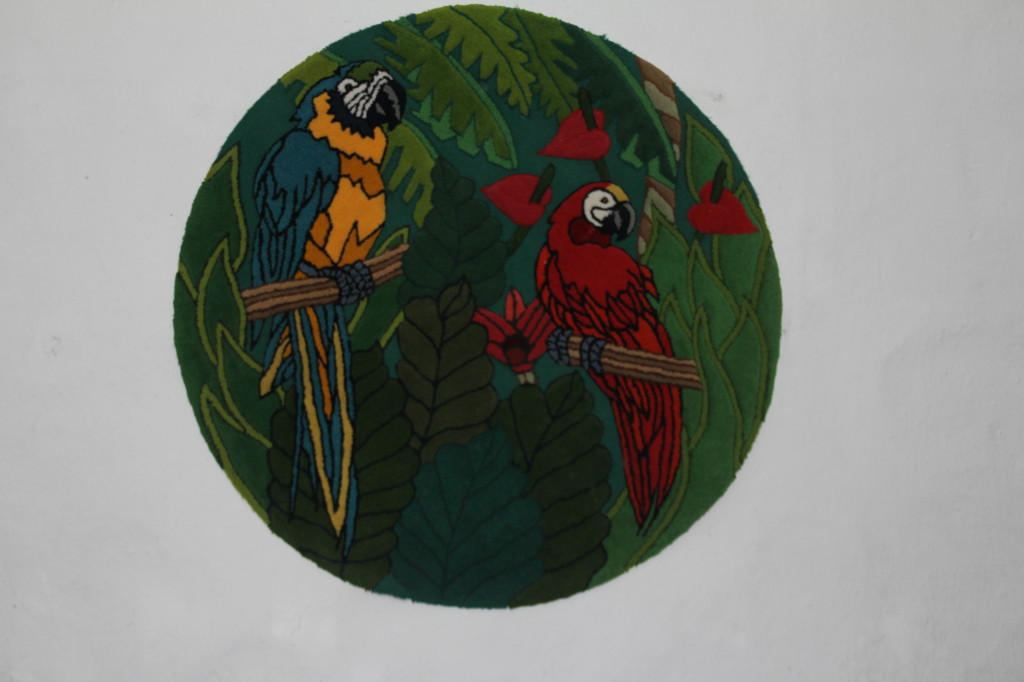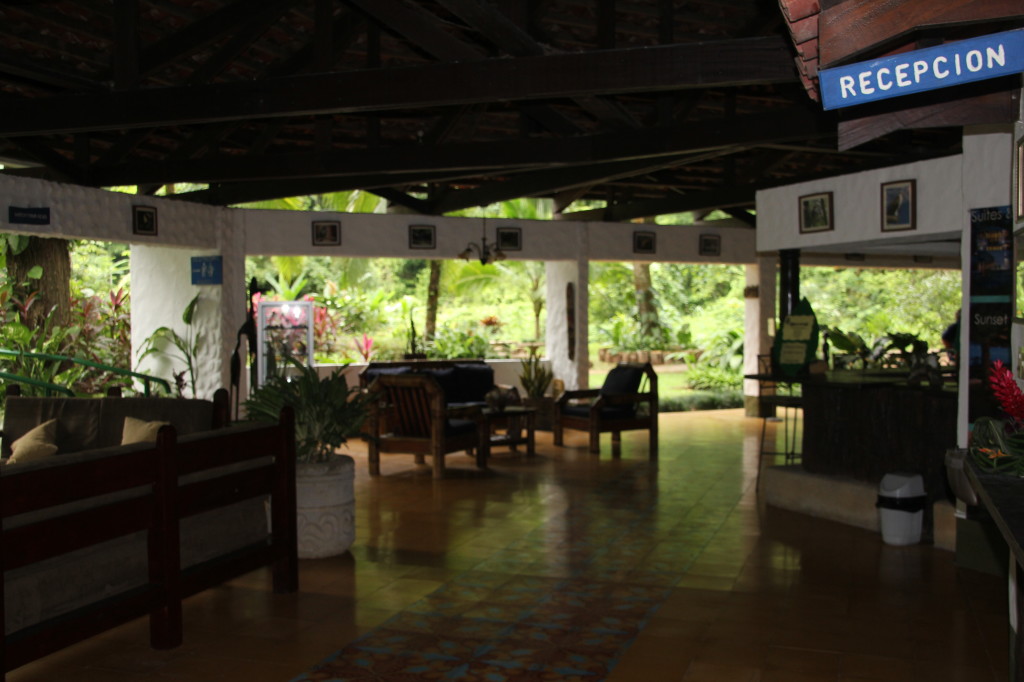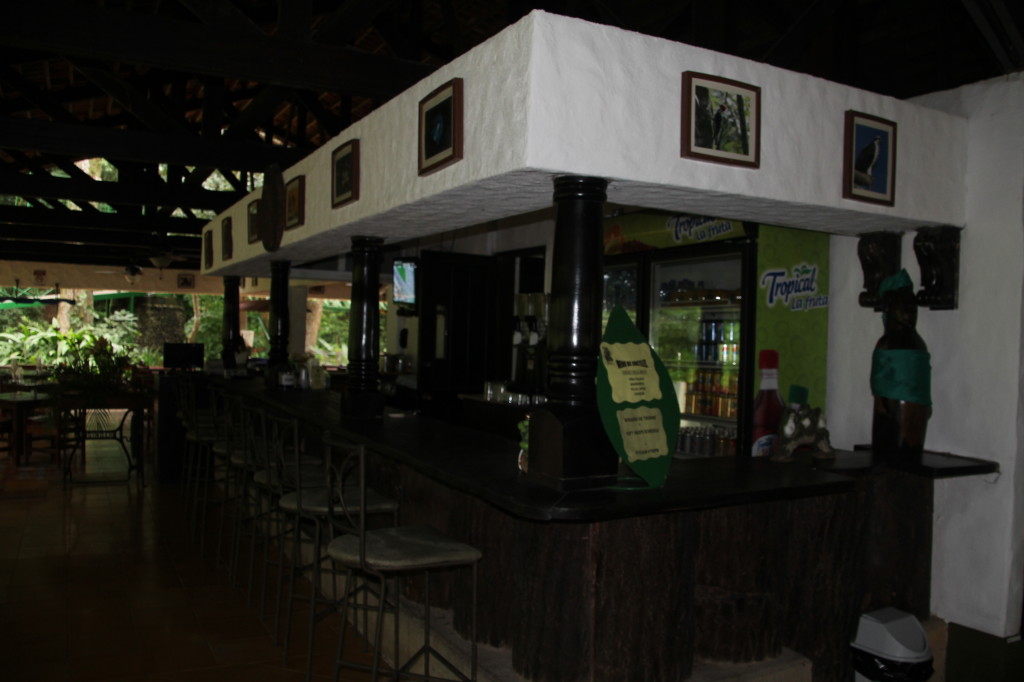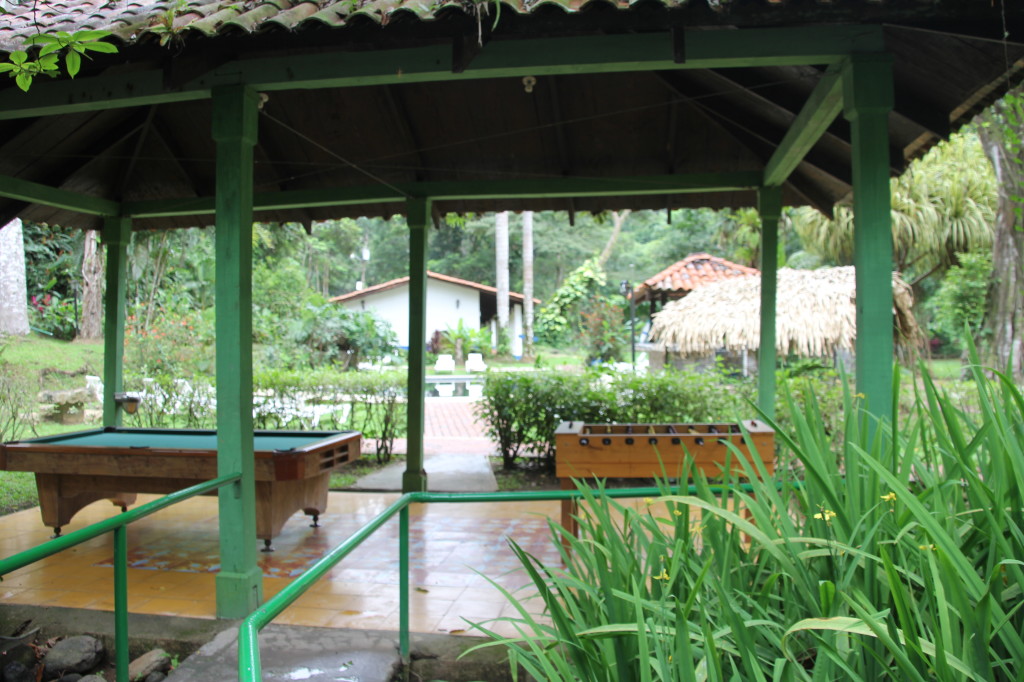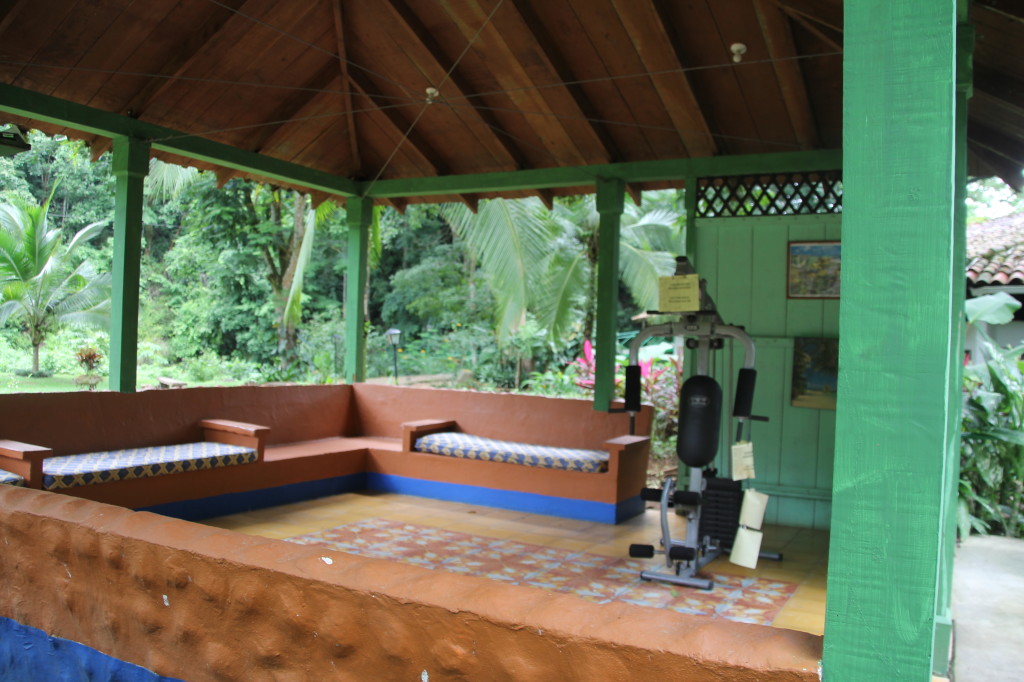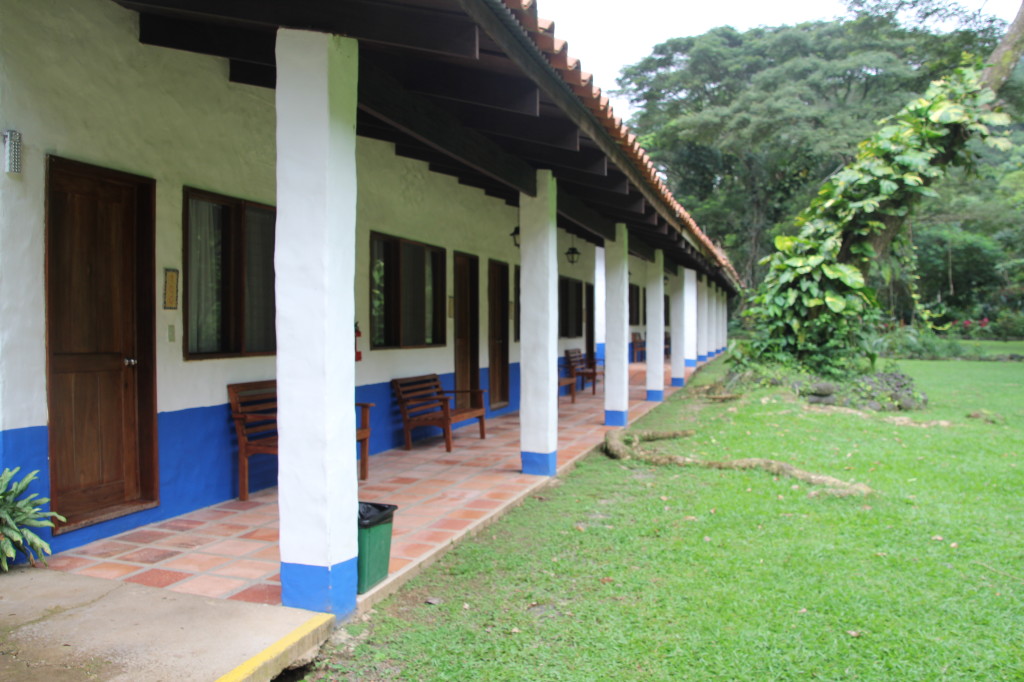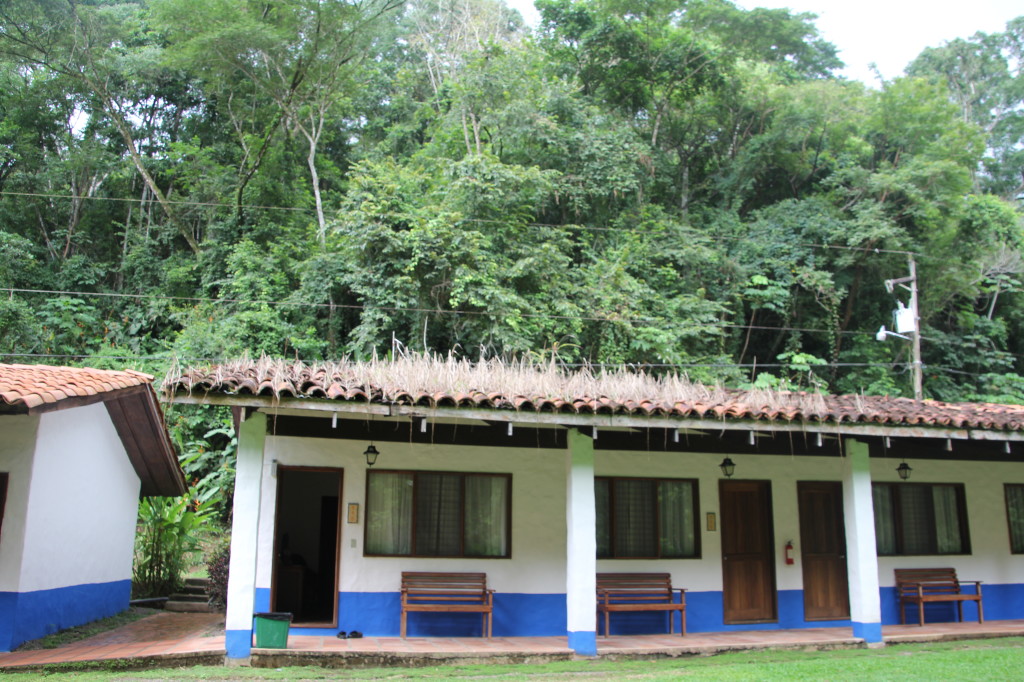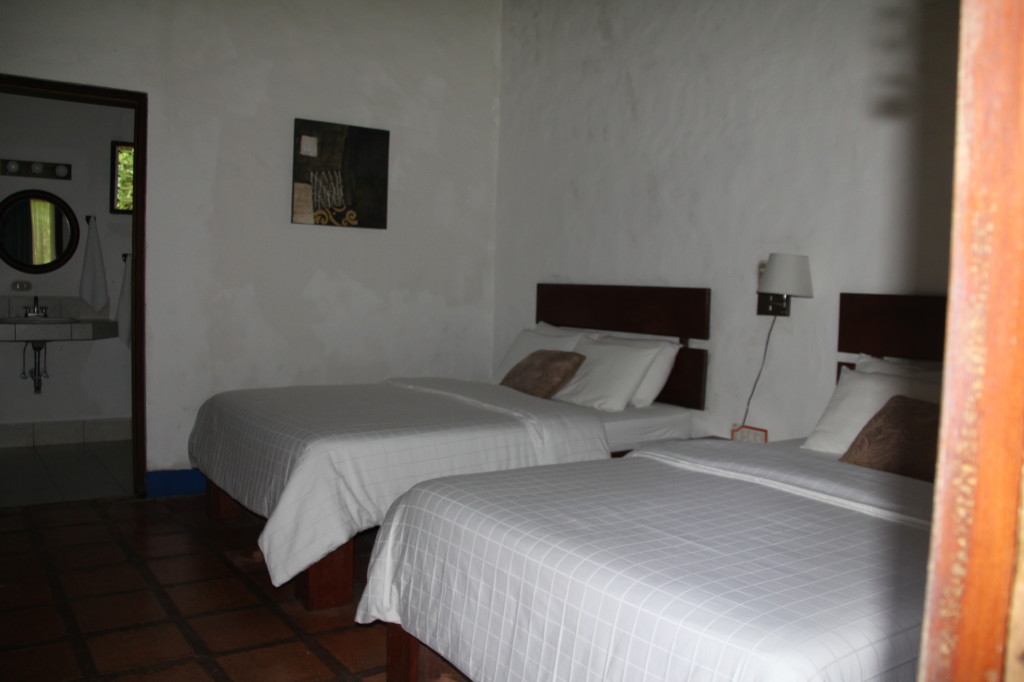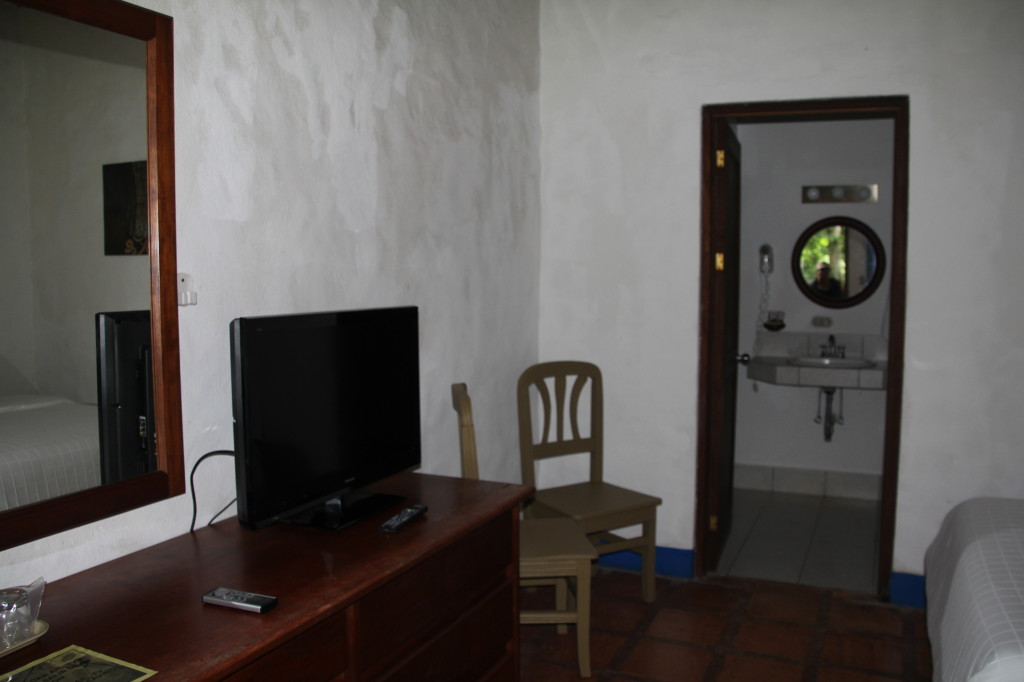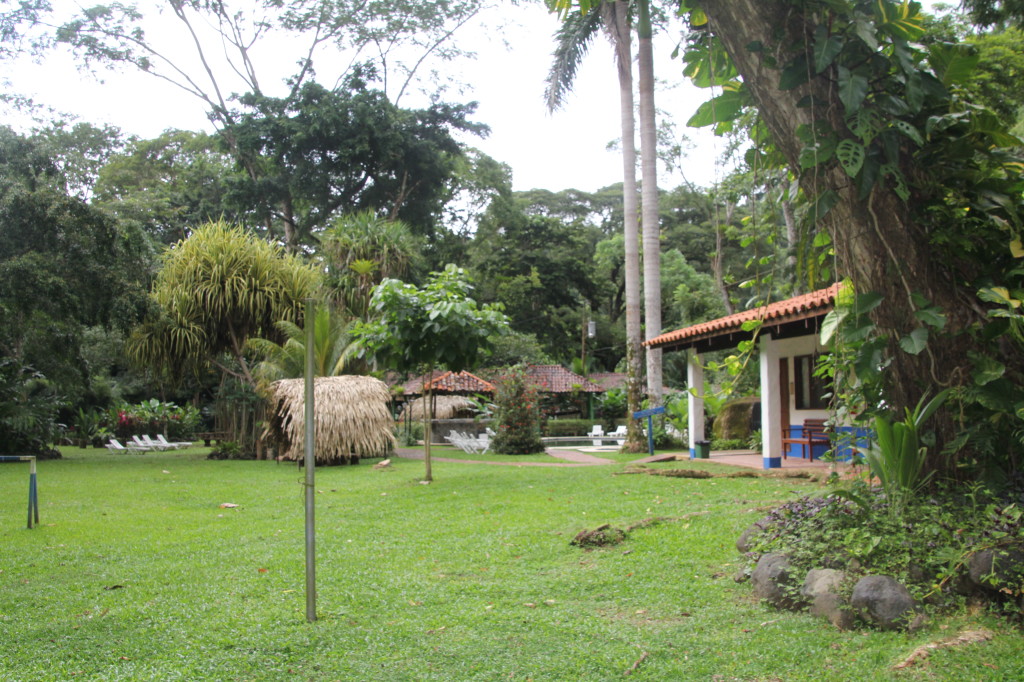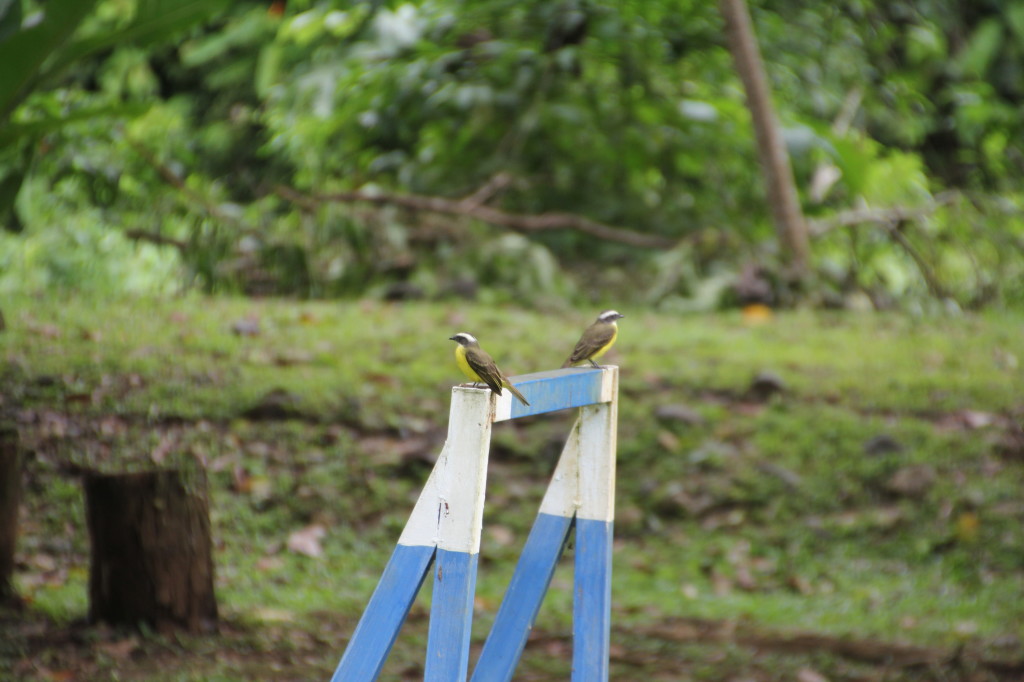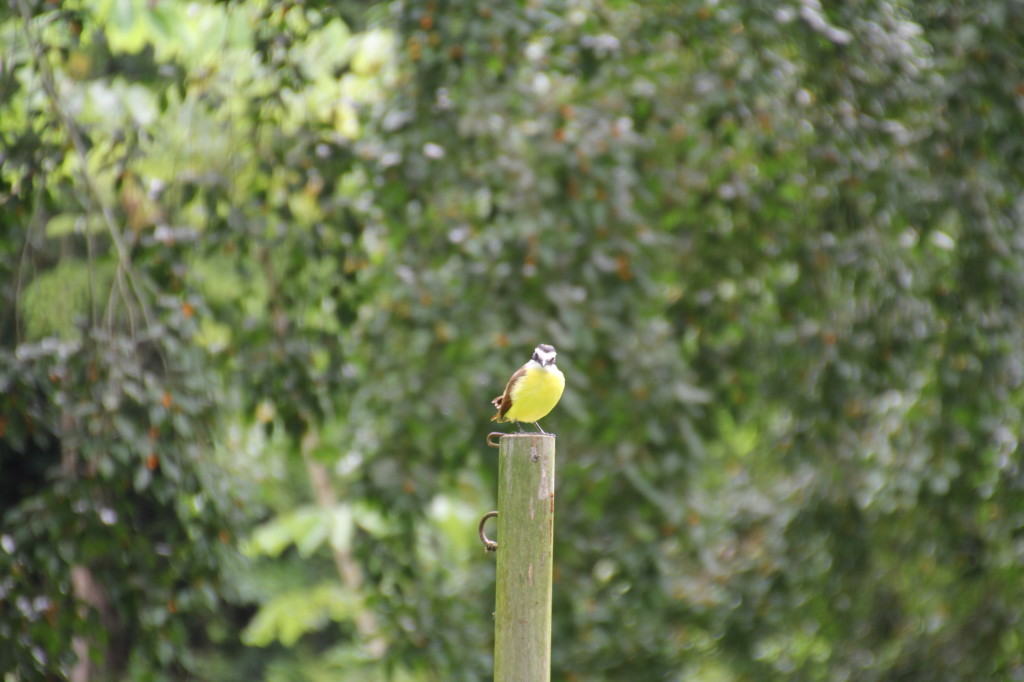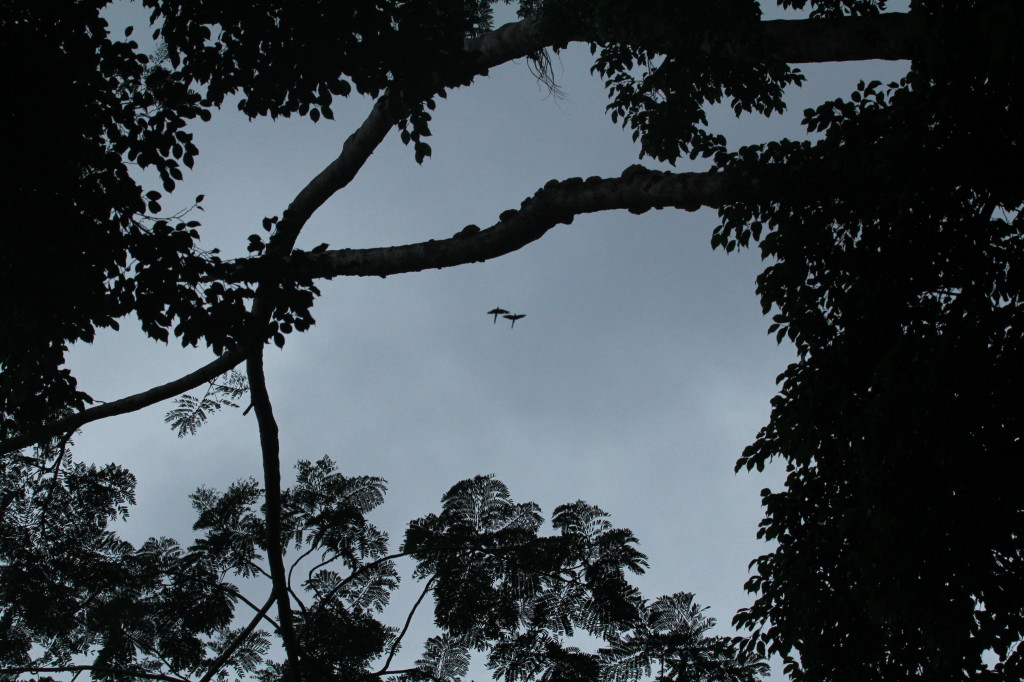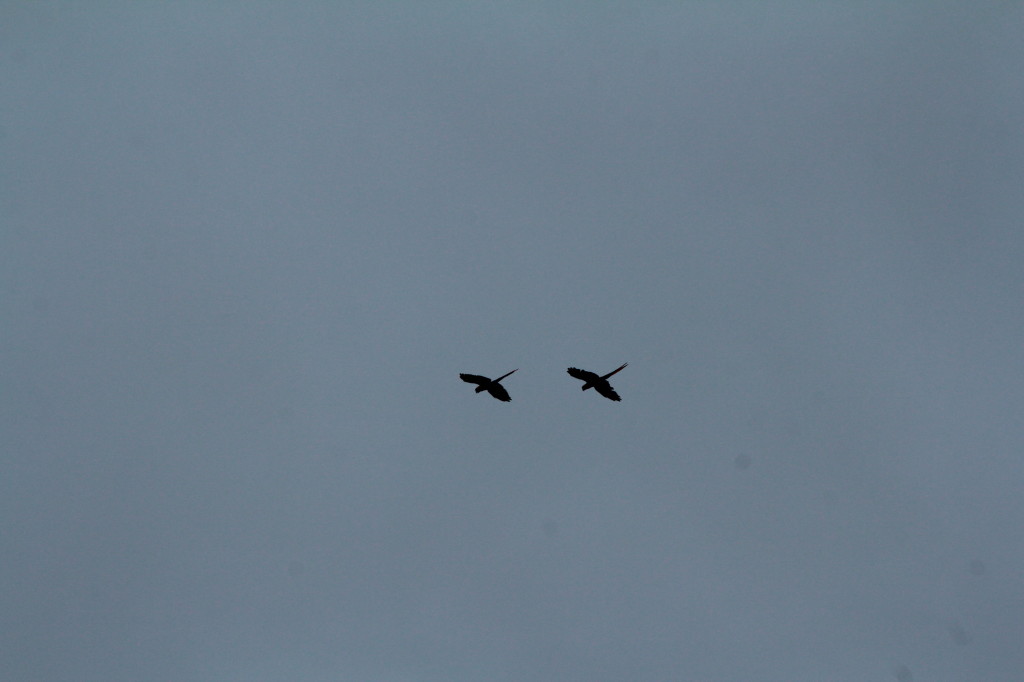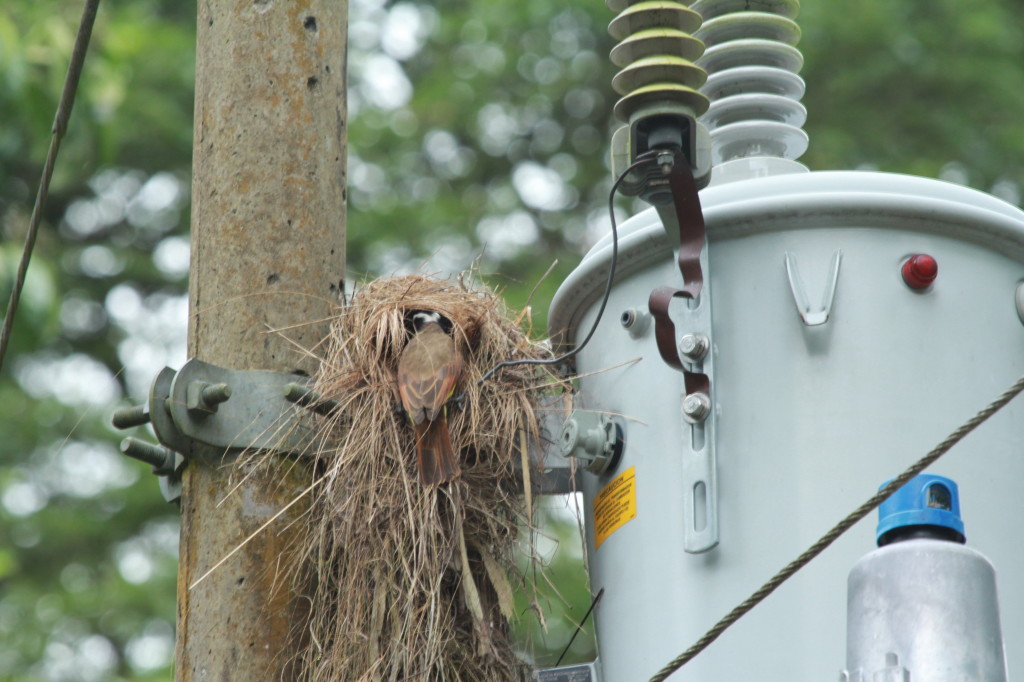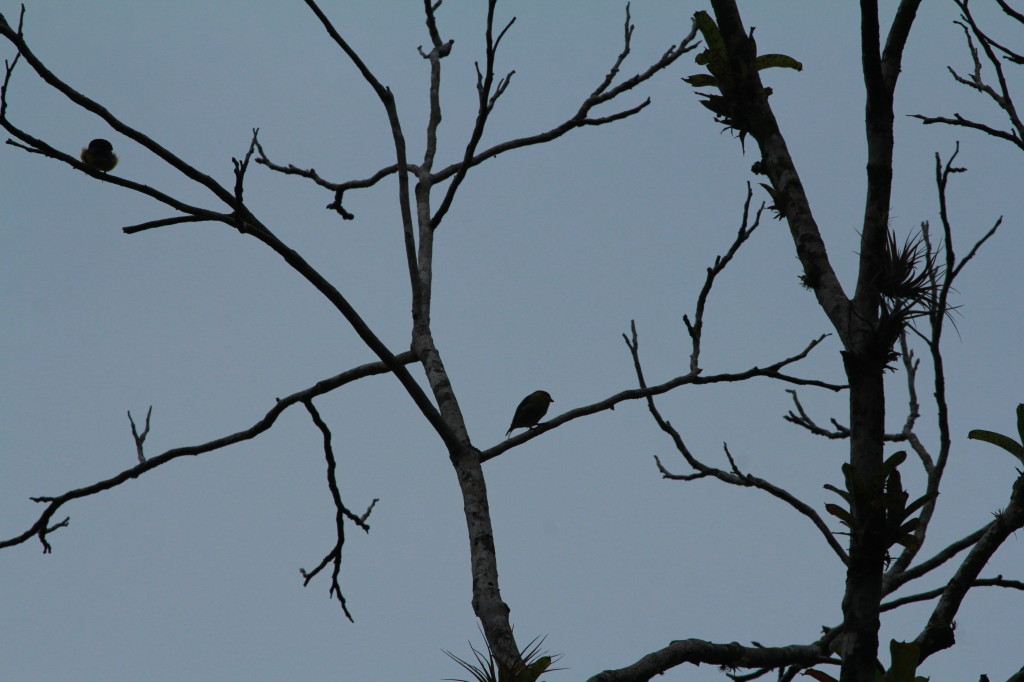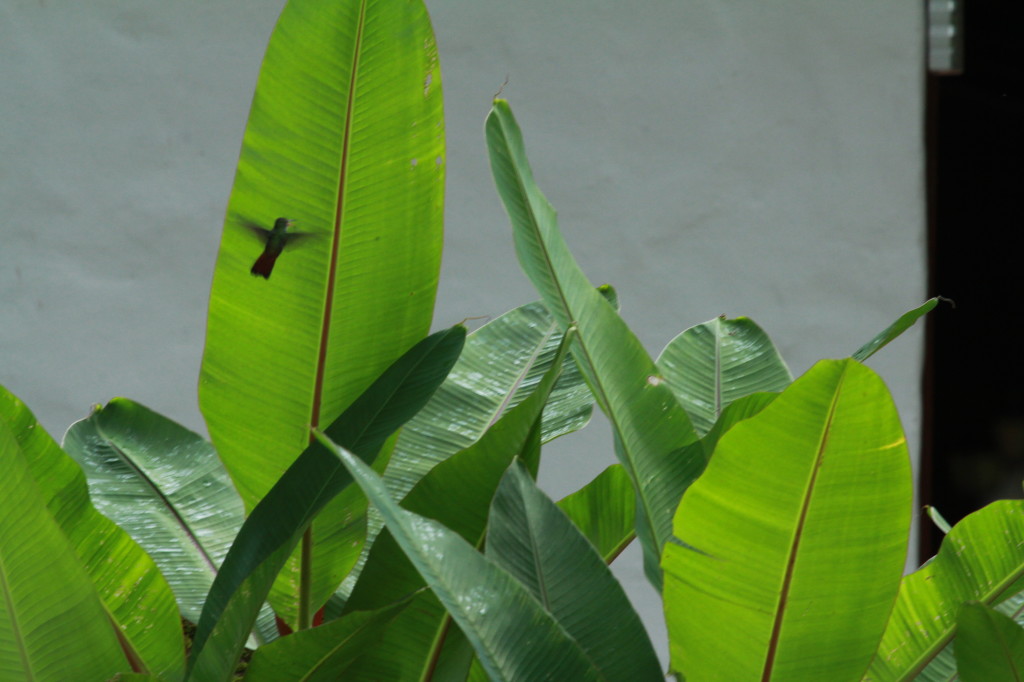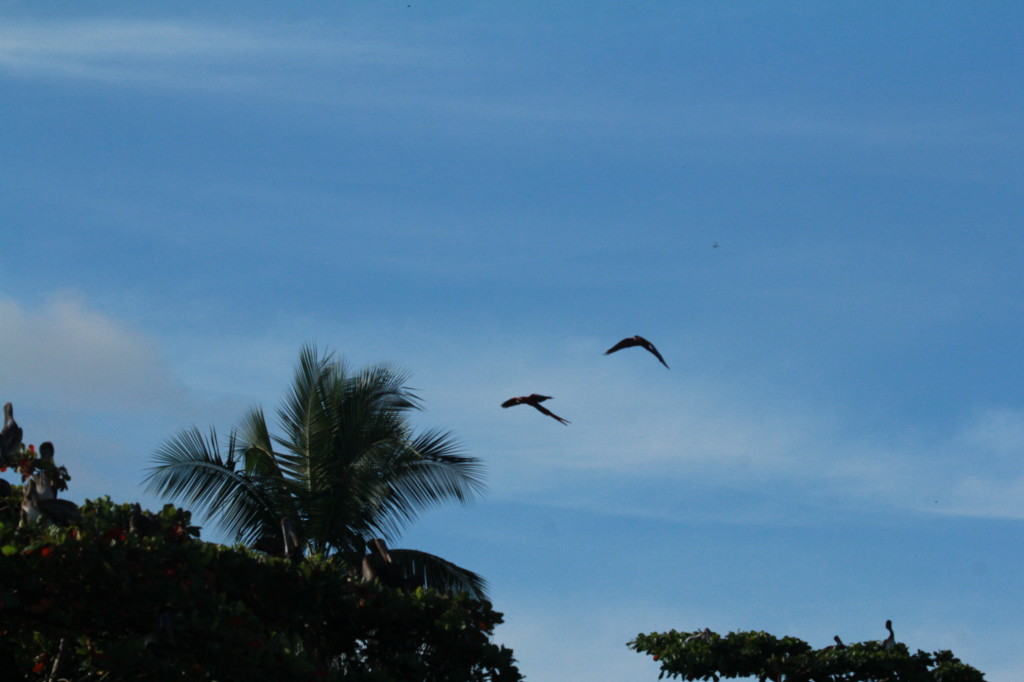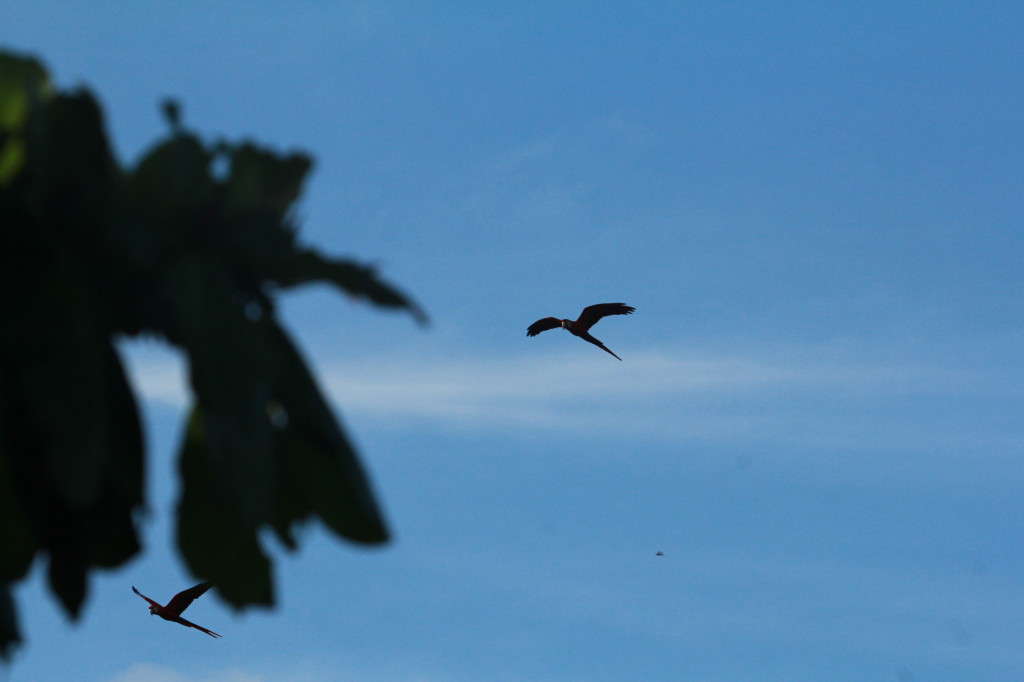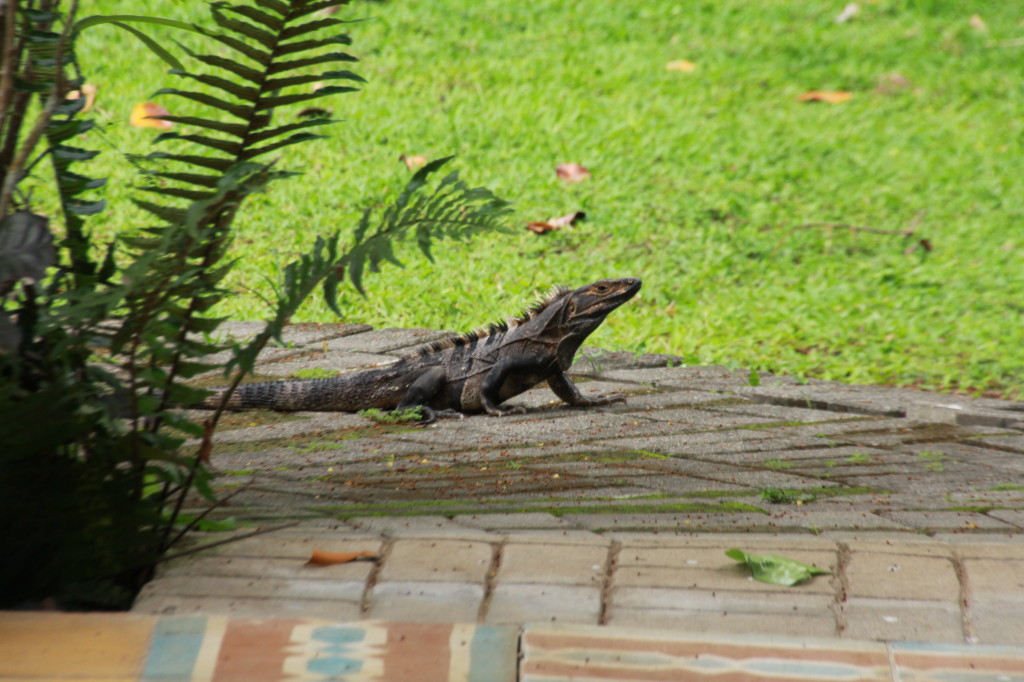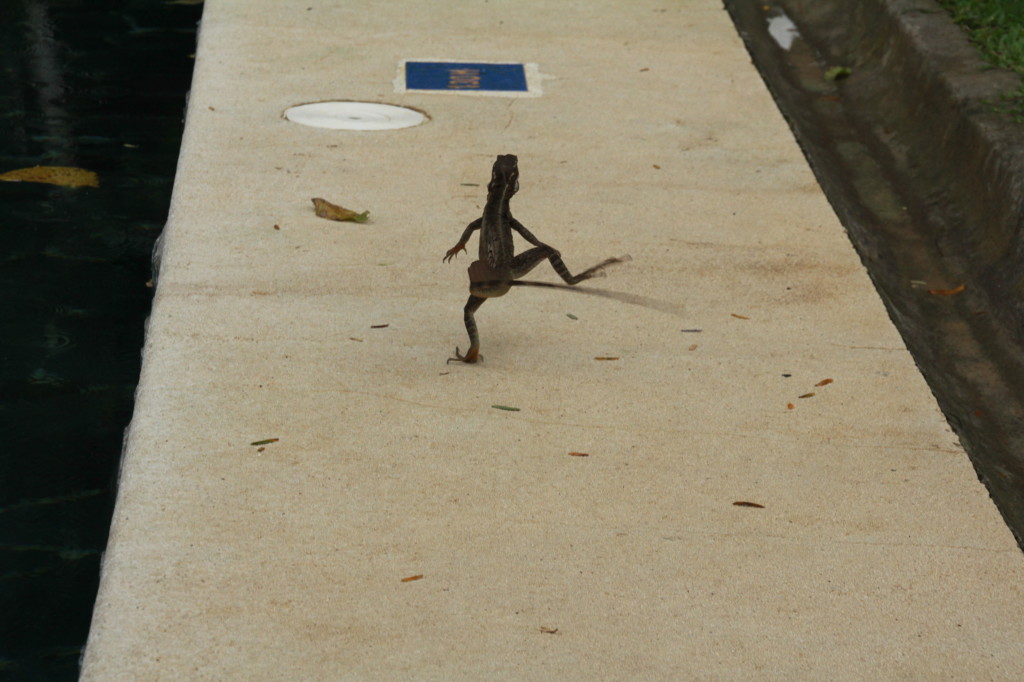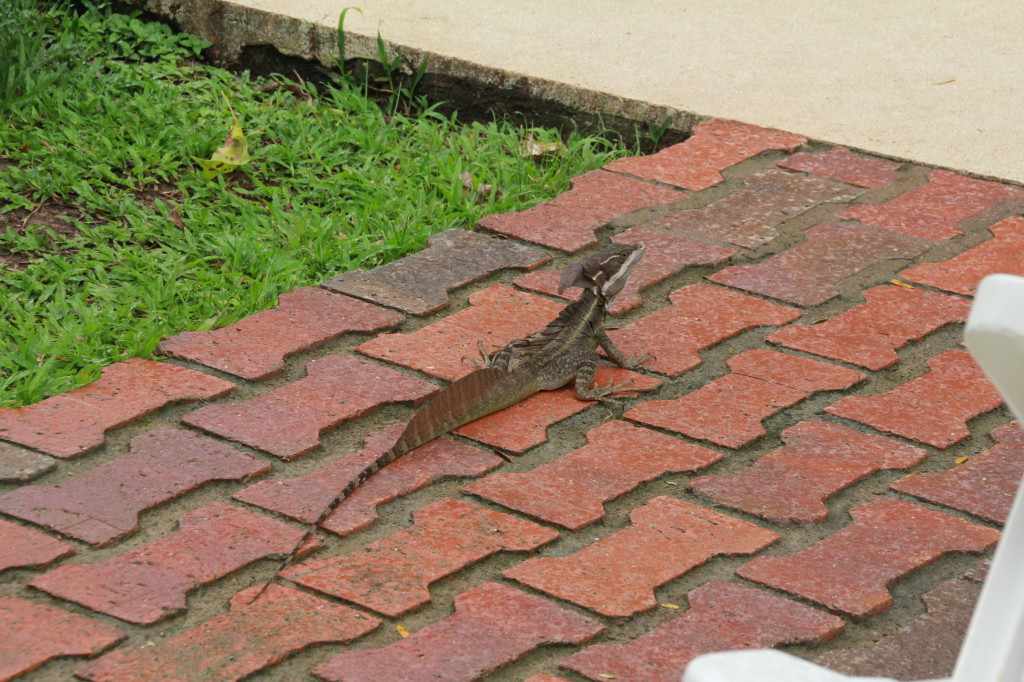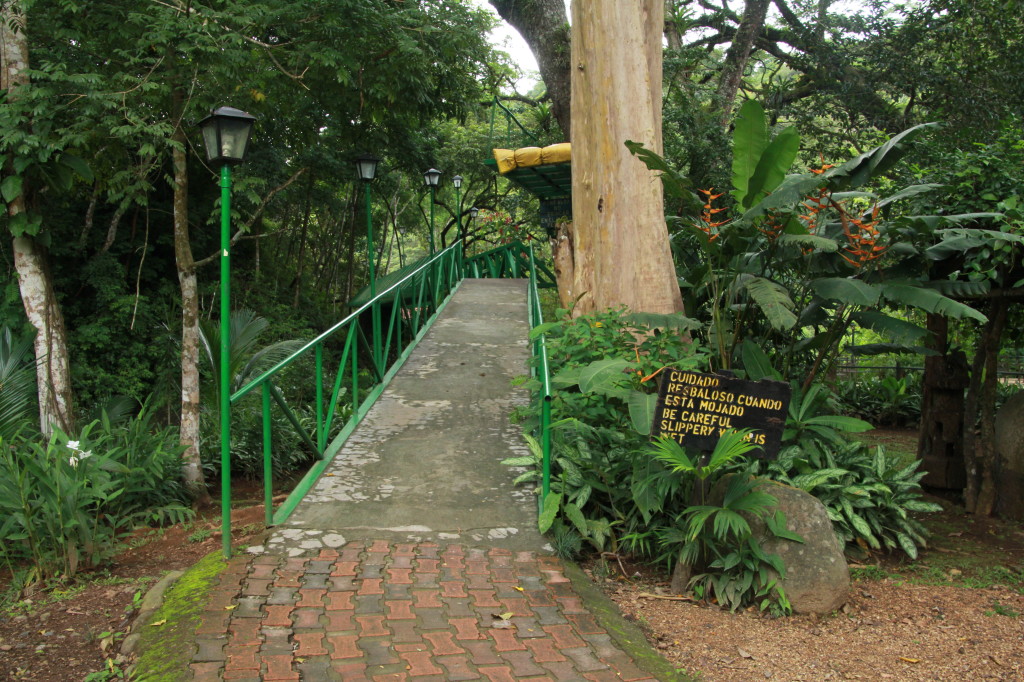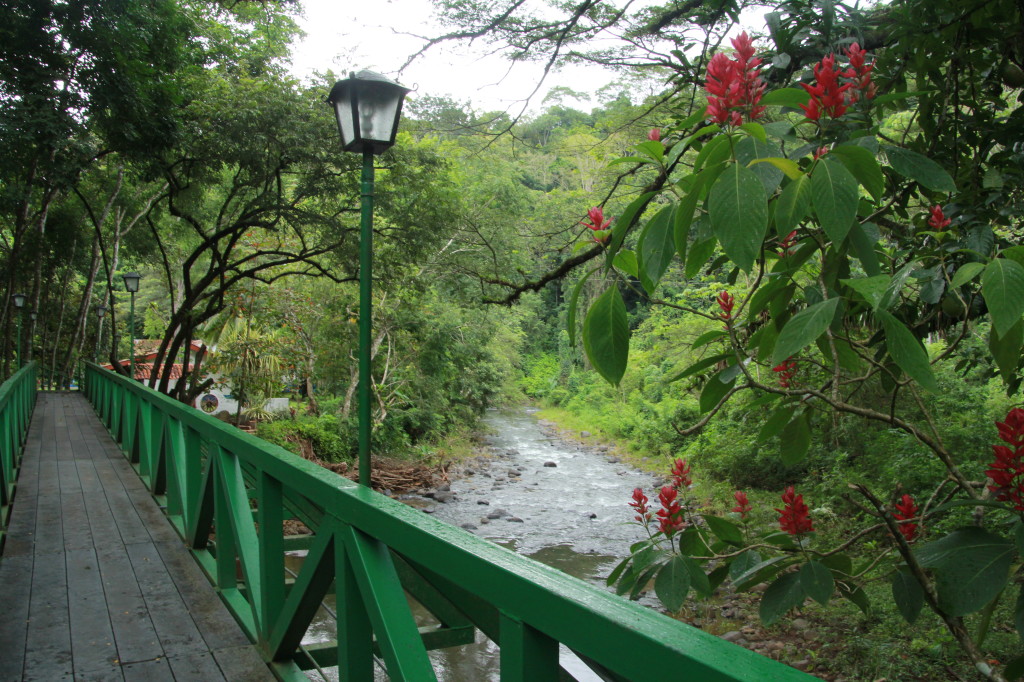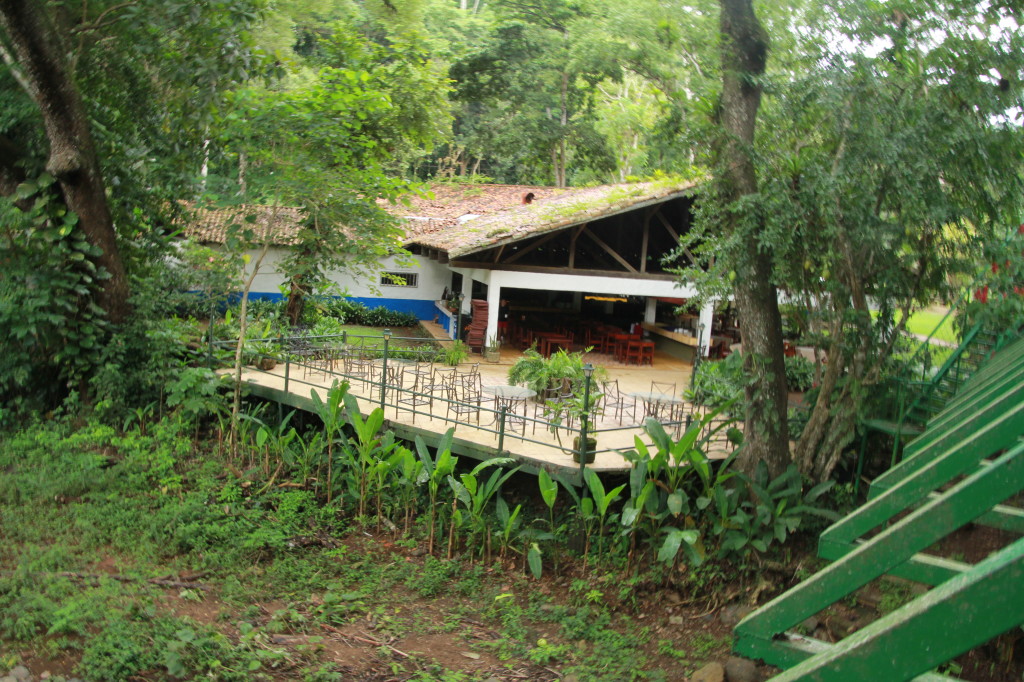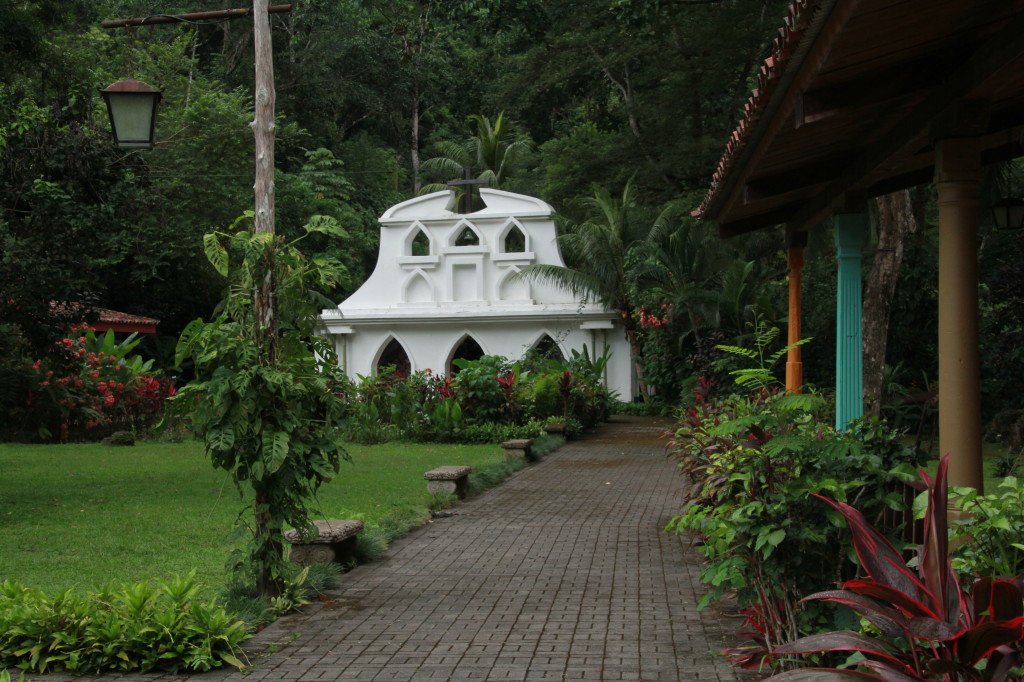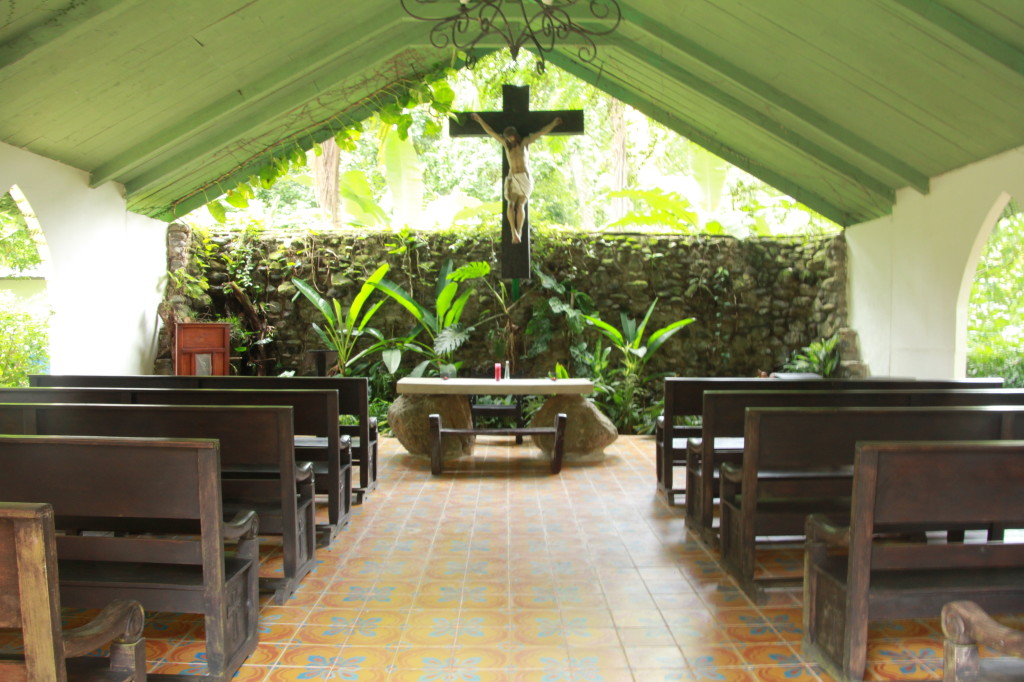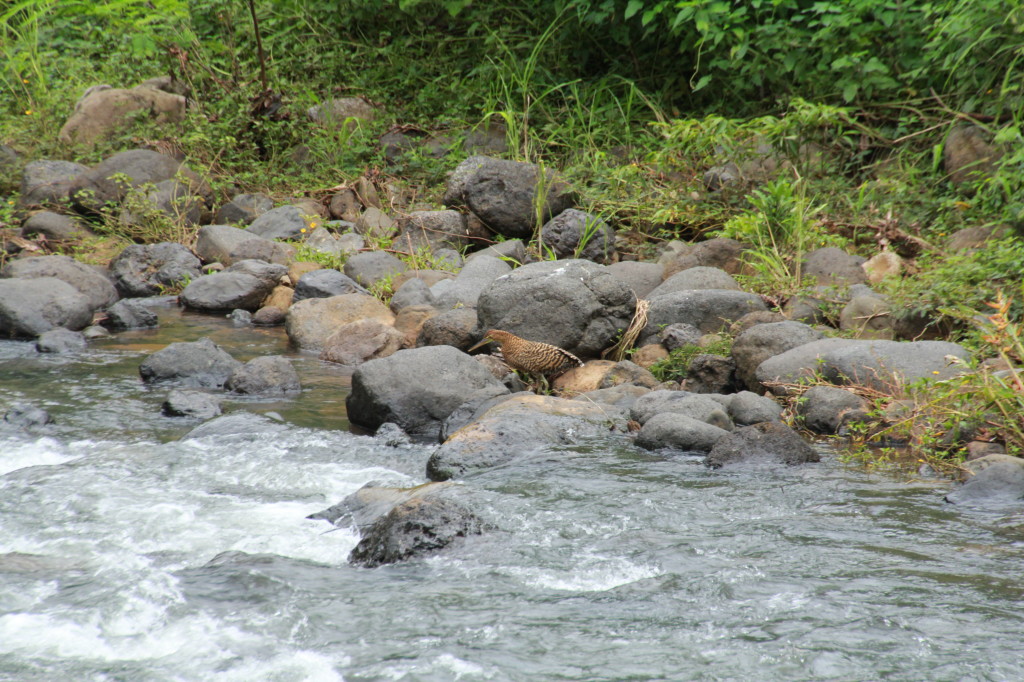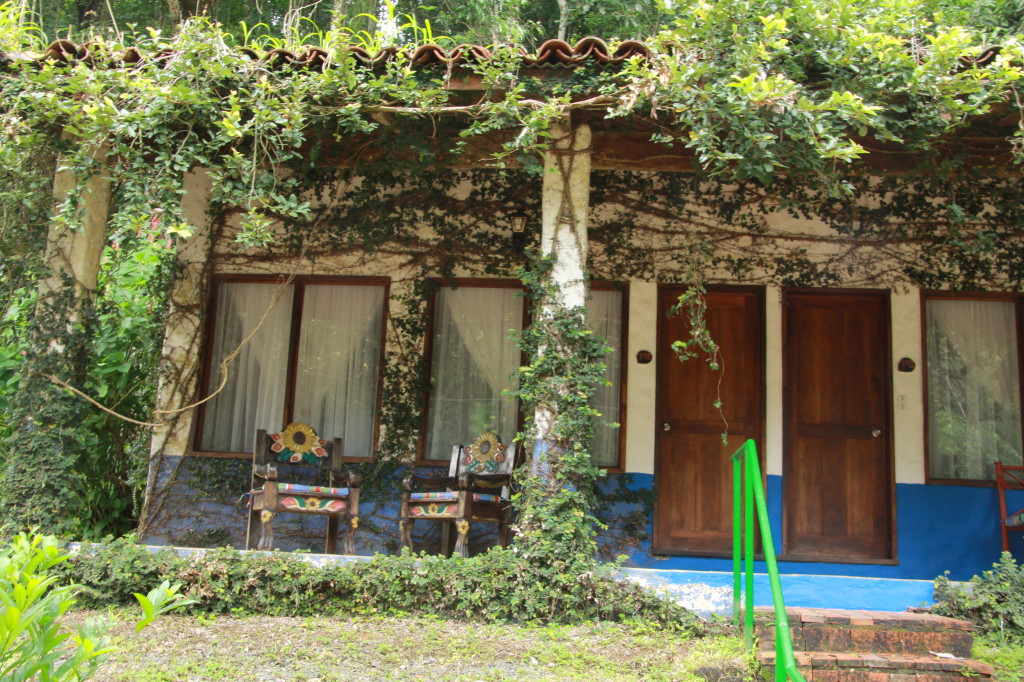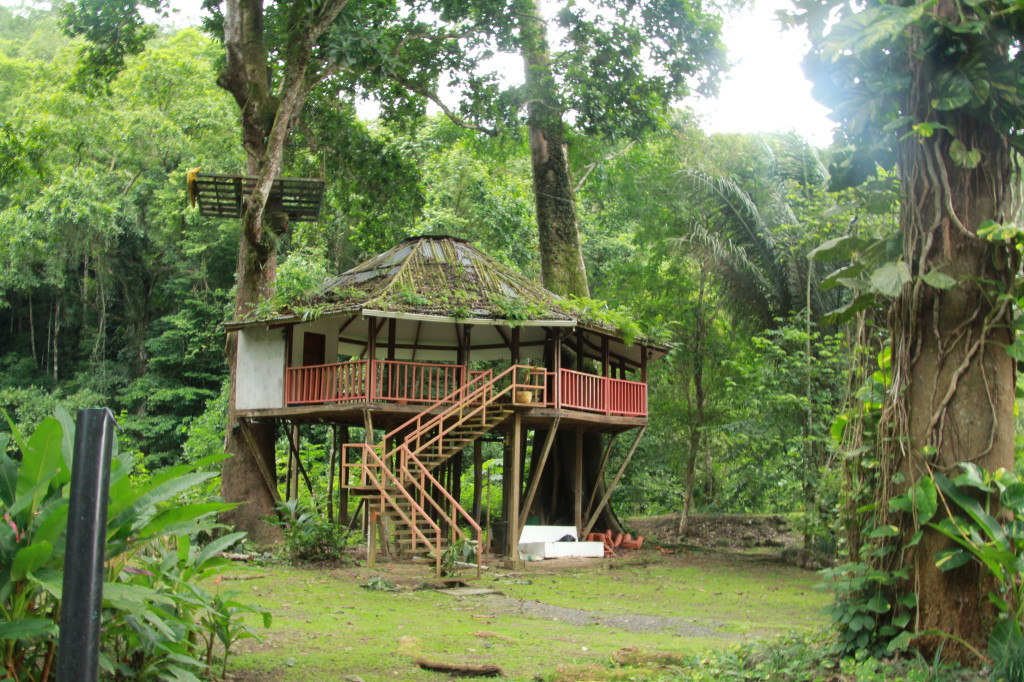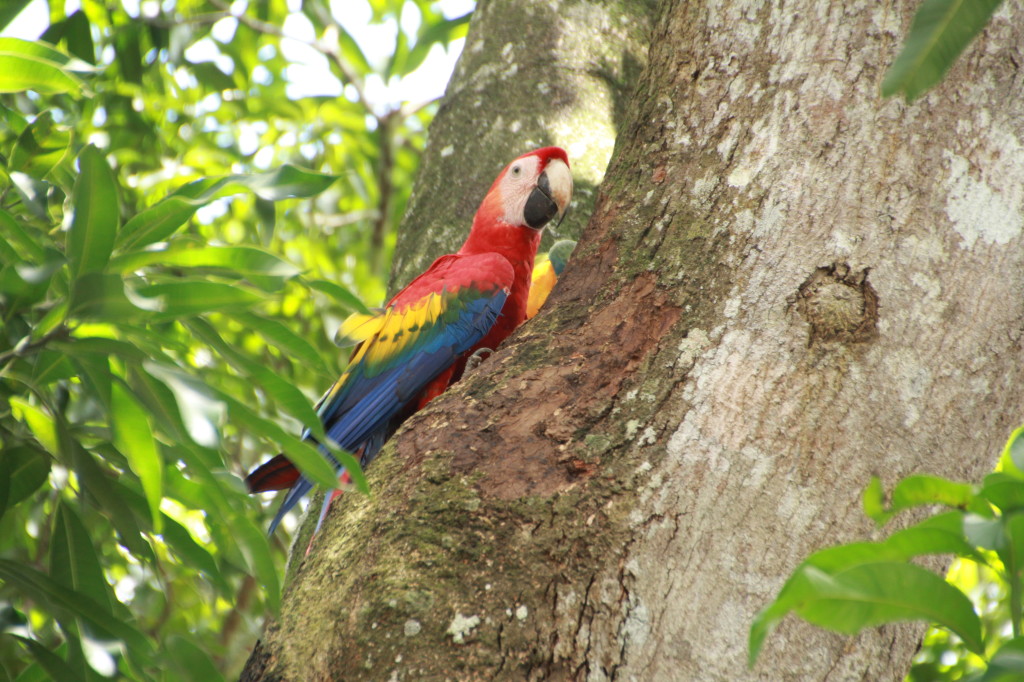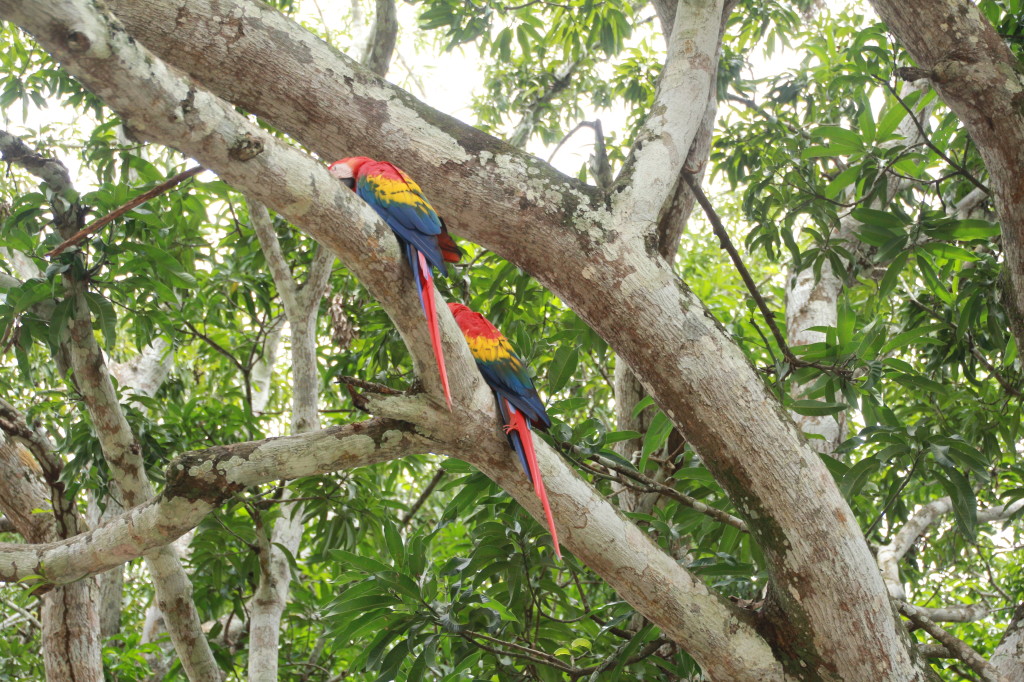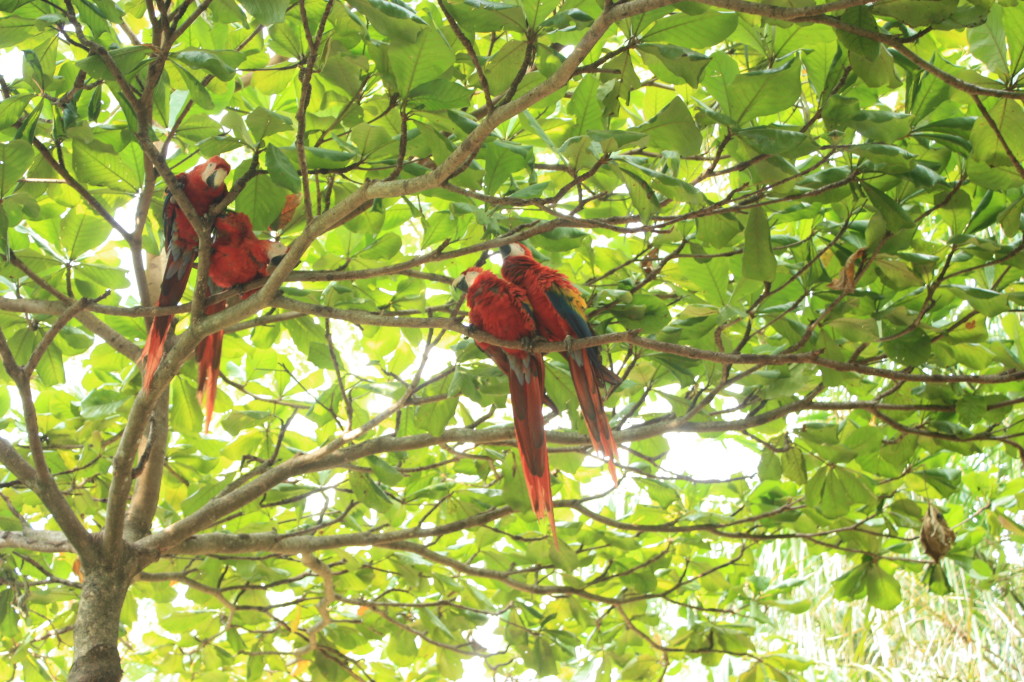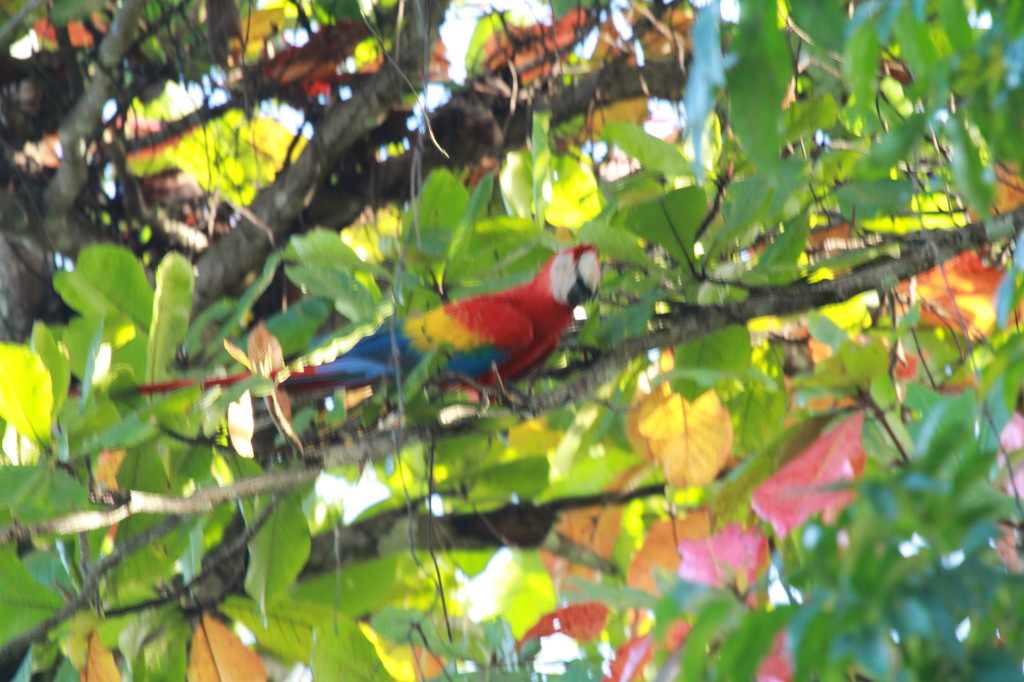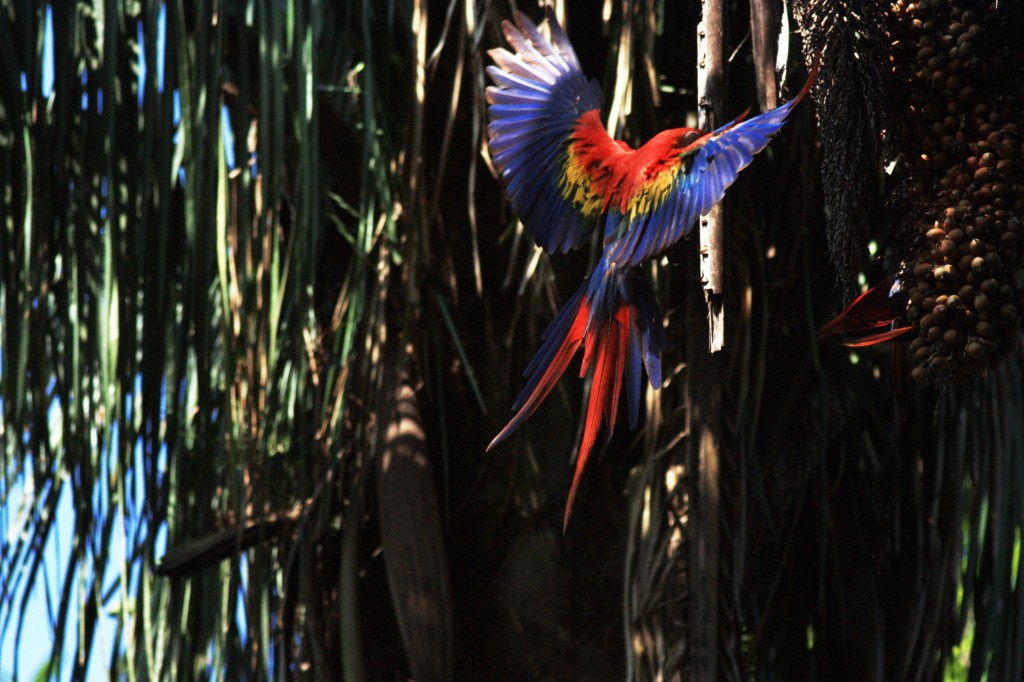Carara National Park in Costa Rica is one of the best places in the world to see Scarlet Macaws. They flock to the palm trees to eat the nuts and their bright red feathers make them stand out.
GETTING THERE
First see how to get to Costa Rica using a Central America award. Then you can either rent a car or take the bus or tourist shuttle bound for Jaco and get off at the park entrance. You can also get a bus from Puntarenas which is a popular cruise ship port. On a previous visit, we were on a Panama Canal cruise that stopped in Puntarenas and booked a private tour with Odyssey Tours which I highly recommend. Our guide, Alvaro from Odyssey Tours showed up before 7am and handed us to his birding guide-Nestor who studies biology and knows birds very well. We headed off to Carara National Park to see the scarlet macaws, this is one of the rare places in the world where they are common and can be easily found. The trails were muddy because the first rain of the season had been the previous night and we were struggling to stay on our feet. My husband was the first to fall flat on his back-not hurt but got all muddy. I later fell on my side because I was protecting my camera.
Location of Carara National Park
If you are on a land based trip, I recommend you stay at Villa Lapas. Yes, it is older and could use some renovations but if you are there for the birds, you can’t beat the location on the south side of Carara National Park and chance to see the macaws and other birds on the grounds. You can walk to the main part of Carara from here as well if you don’t mind the heat.
.
In the map above which I found on Go Visit Costa Rica, I have highlighted the path you need to follow to see the macaws. You will need a ticket first which costs $10 at the ticket office. Then walk or drive to where I indicated “Path to palm trees”. Go as early in the morning as possible to see the macaws fly in and enjoy a breakfast of palm nuts. We spent about an hour here watching a family of Scarlet Macaws fly back and forth bringing nuts to another apparently more comfortable tree to eat them. Then we went back to the main office area and took the trail to the right (yellow highlights). By this time it was getting closer to noon when birds tend to take a siesta so we didn’t see much, just some leaf cutter ants and a cool looking frog.
When we did the tour with Odyssey, they took us to a local Costa Rican diner for lunch, then in the afternoon we saw more birds including a Violaceous Trogon and Turquoise-browed Motmot (the one with the long racquet-tail). A complete bird list can be found here.
PHOTOS
There’s a lot here as I just couldn’t get enough of the Scarlet Macaws! Lighting was poor but I did my best!

